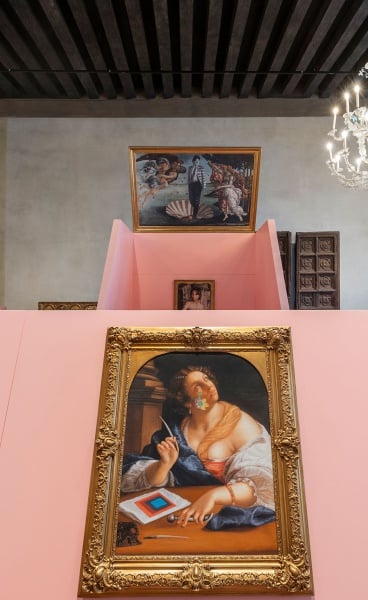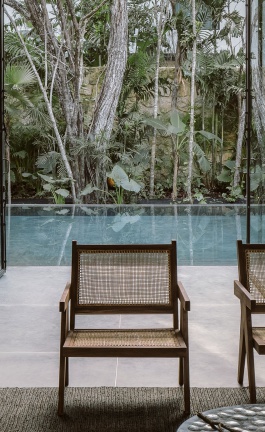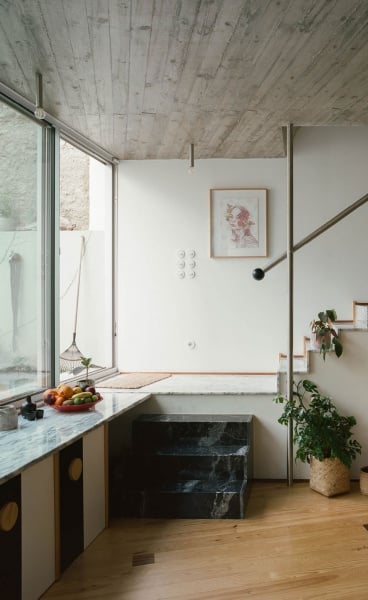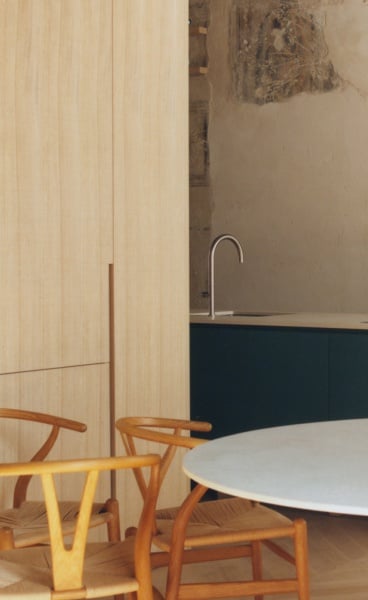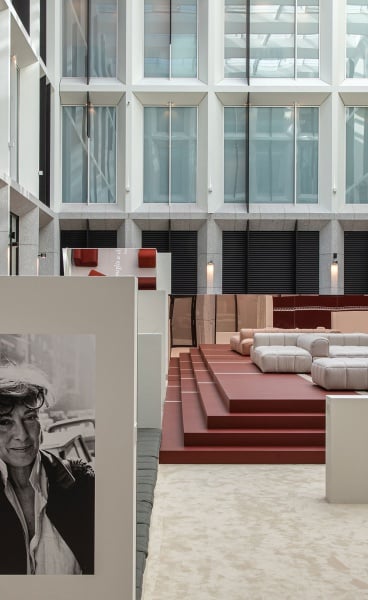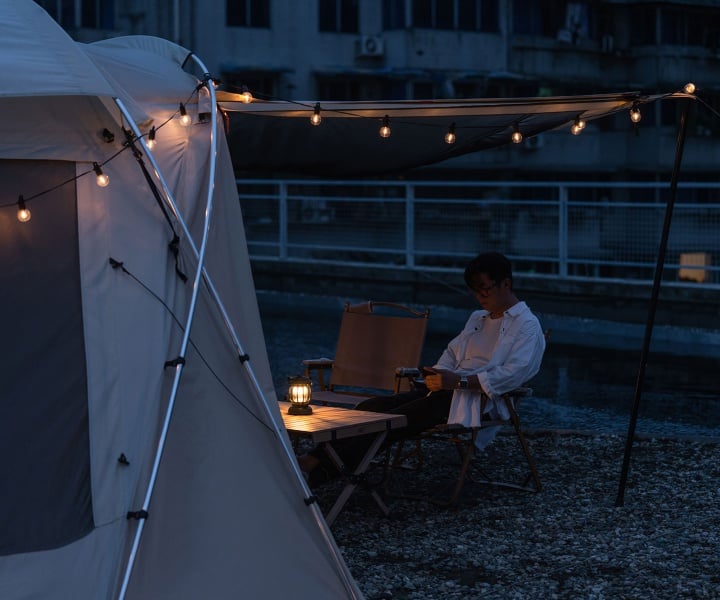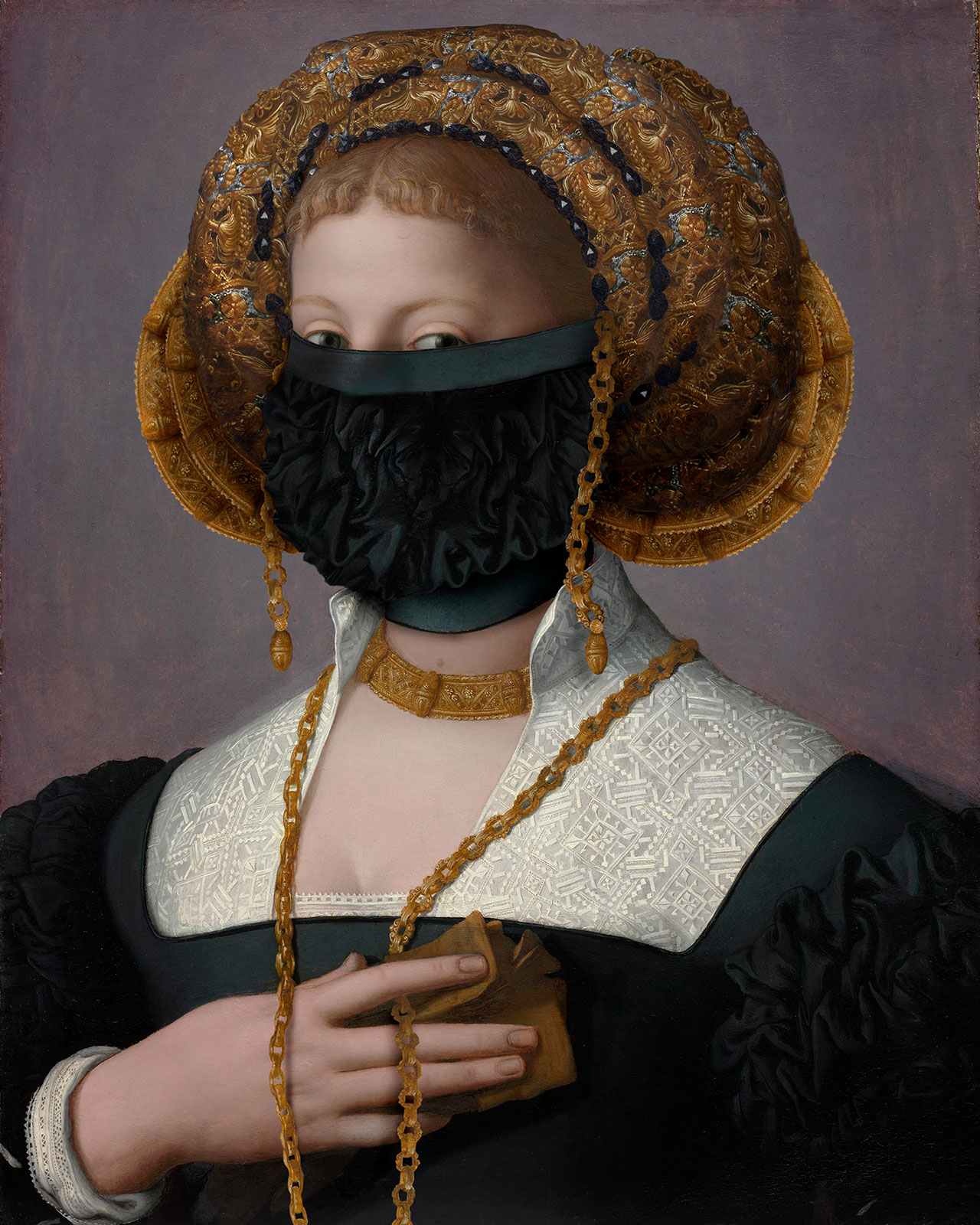
Volker Hermes, Hidden Bronzino IV, 2021.
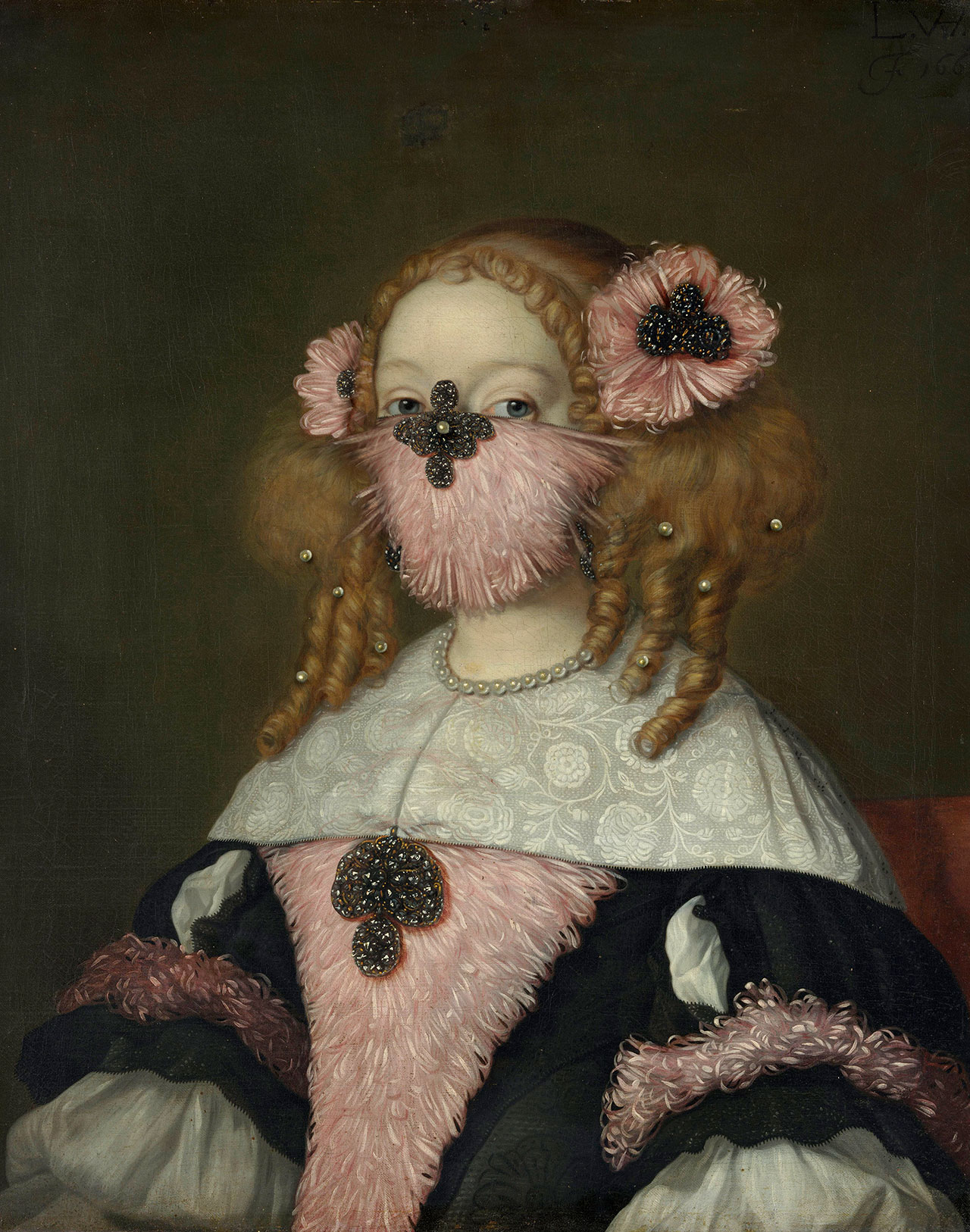
Volker Hermes, Hidden van der Helst III, 2020.
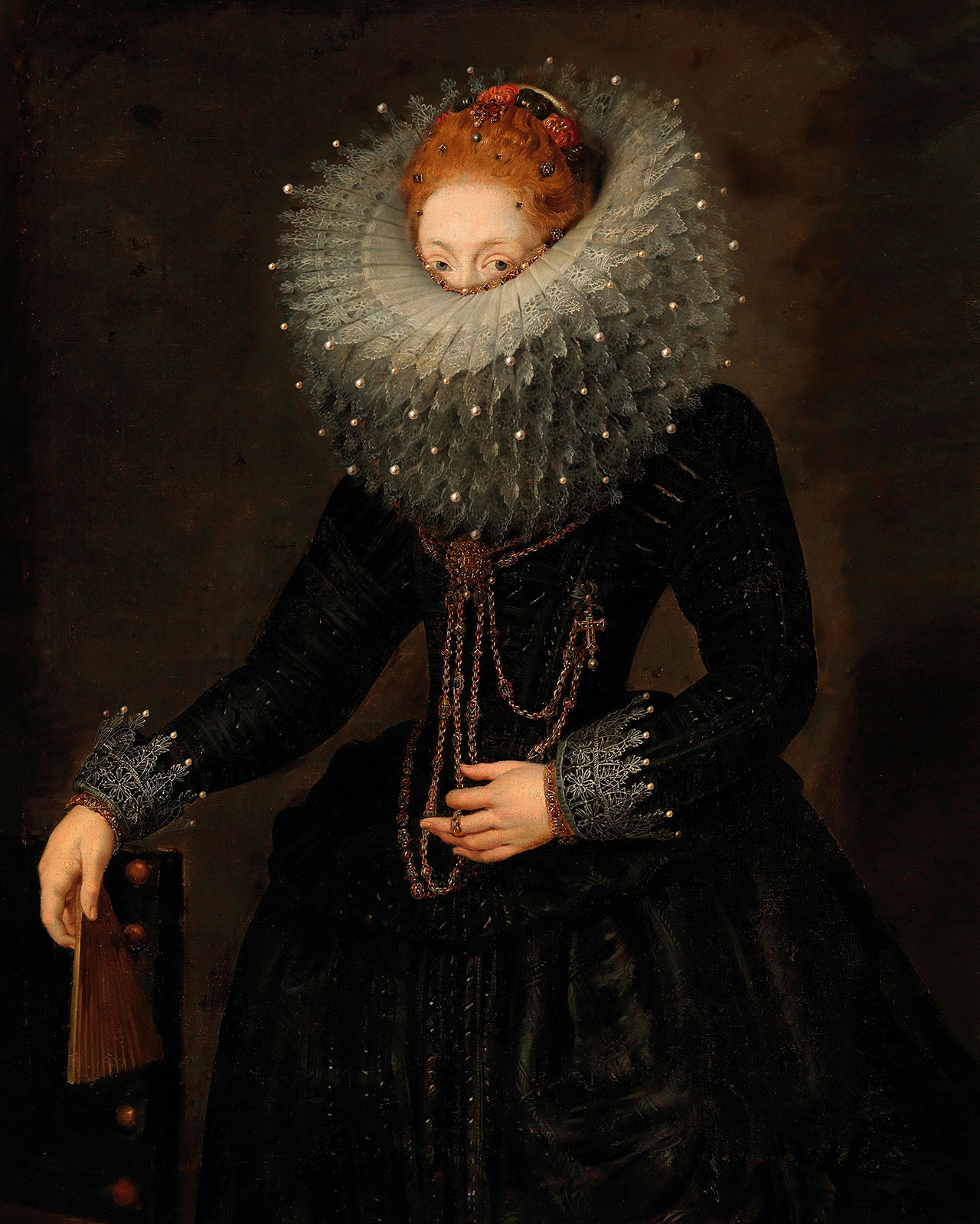
Volker Hermes, Hidden Antwerp School, 2021.
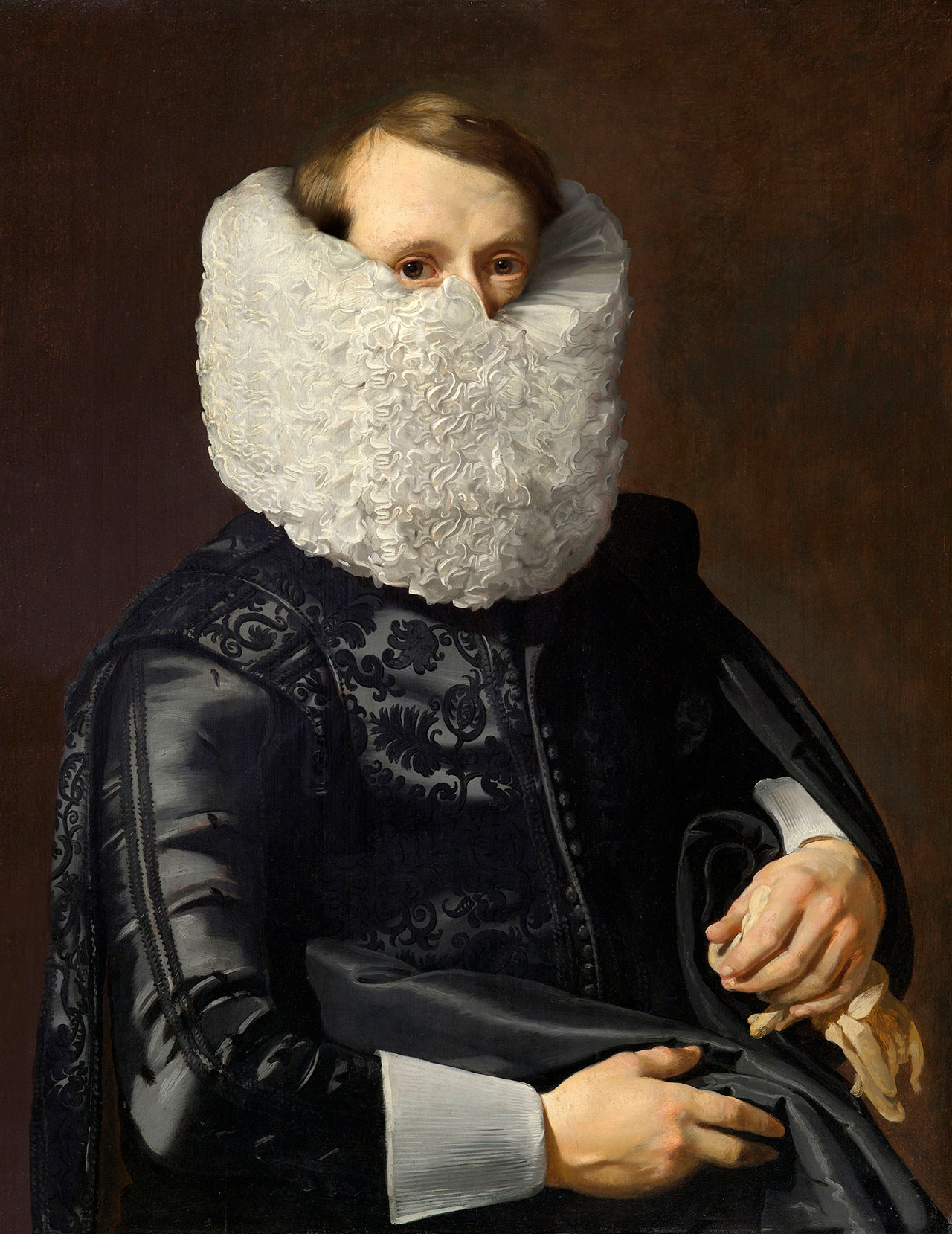
Volker Hermes, Hidden de Keyser, 2019.
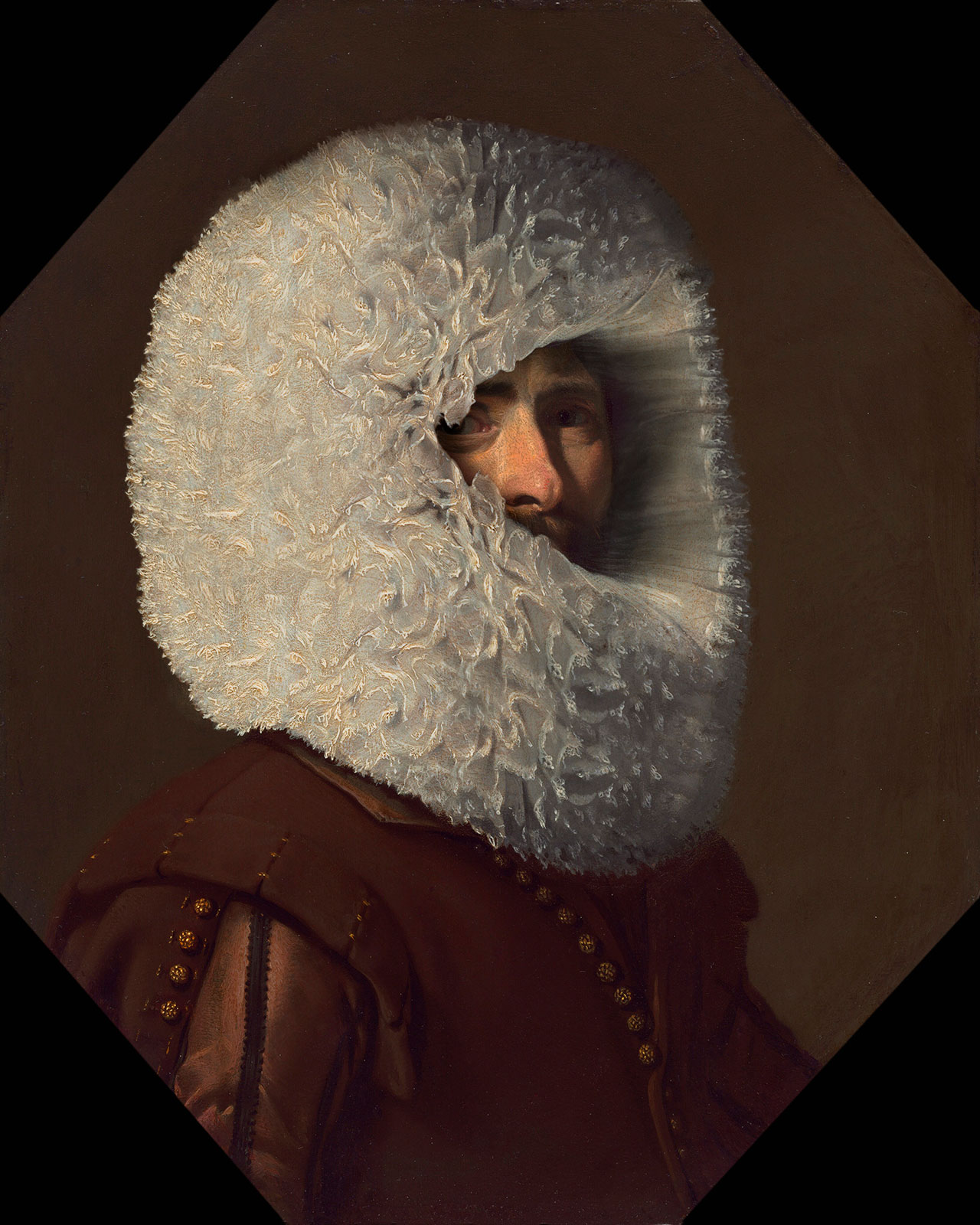
Volker Hermes, Hidden de Keyser II, 2021.
Did you always want to be an artist?
Actually, for quite a long time, I wanted to be an archaeologist before gradually gravitating towards becoming an artist, which explains my interest in historical context.
How did the Hidden Portrait series begin? What was your intention at the time? Has it changed since?
A few years after graduating from the art academy, I began to think about my role as an artist in society, the connection between art and representation [in society], and what impact this has on artworks. I found a lot of material on these complex issues in historical portraits, and as I didn't want to paint like an Old Master, I decided to use digital image processing - which I had to teach myself from scratch. The concept has since evolved as have my technical skills which opened up completely new approaches.
You are a painter by profession but you rely on digital image processing for this series. How easy was the switch? How does your painting proficiency affect your digital skills?
I'm glad you asked that! I am a painter; everything I do comes from the point of view of a painter. For example, when I modify a dress on a painting, I'm not modifying it from the perspective of a photographic reality, but from a painterly reality. There is actually a difference. In fact, I taught myself image editing exactly for this purpose. I use a lot of tools probably quite unconventionally. It helps that I know, or at least have an idea of how a painter would paint details like my [digital] interventions. And because you asked, it was super difficult learning these programs, especially because I'm not a very tech-savvy guy.
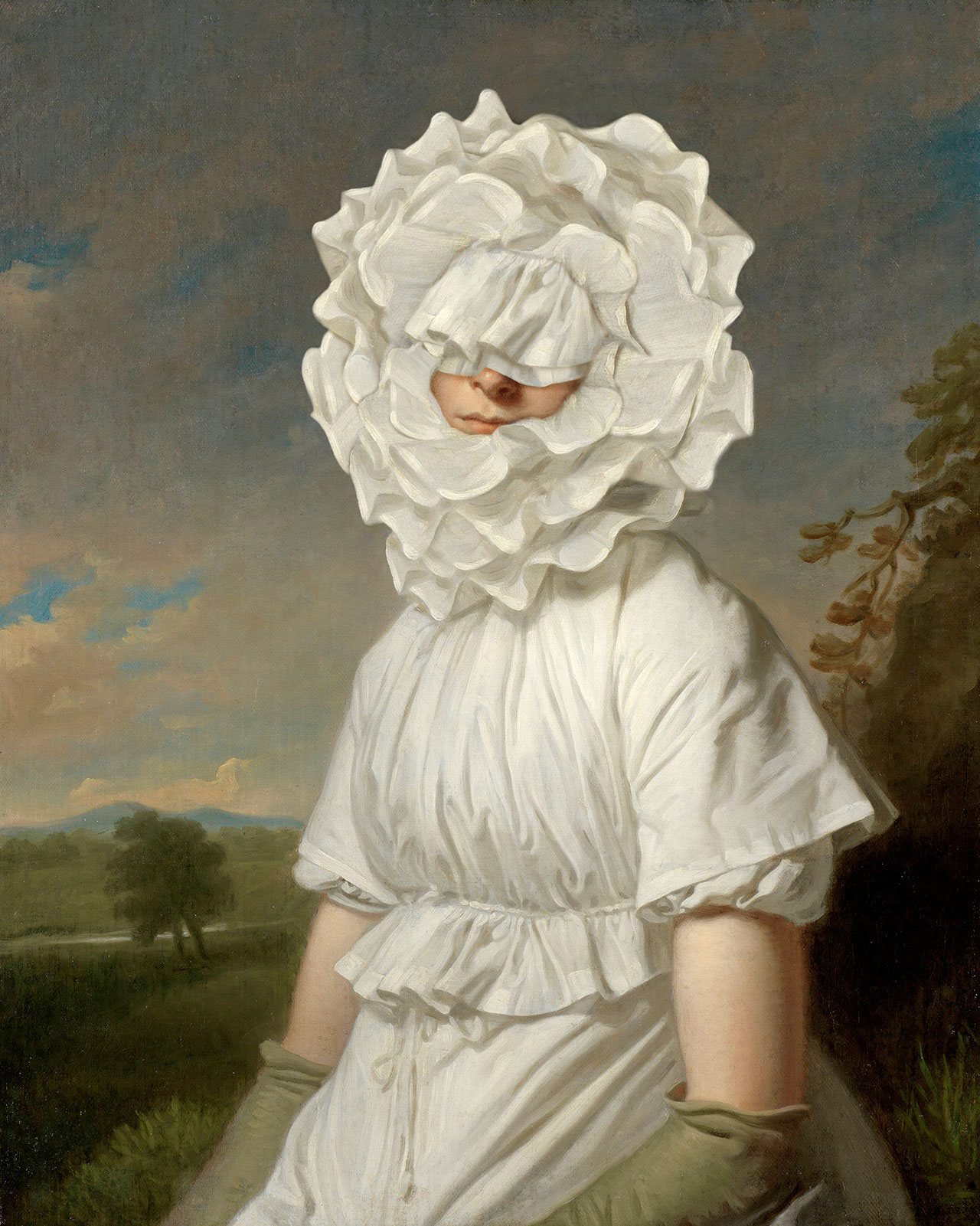
Volker Hermes, Hidden Hodges, 2015.
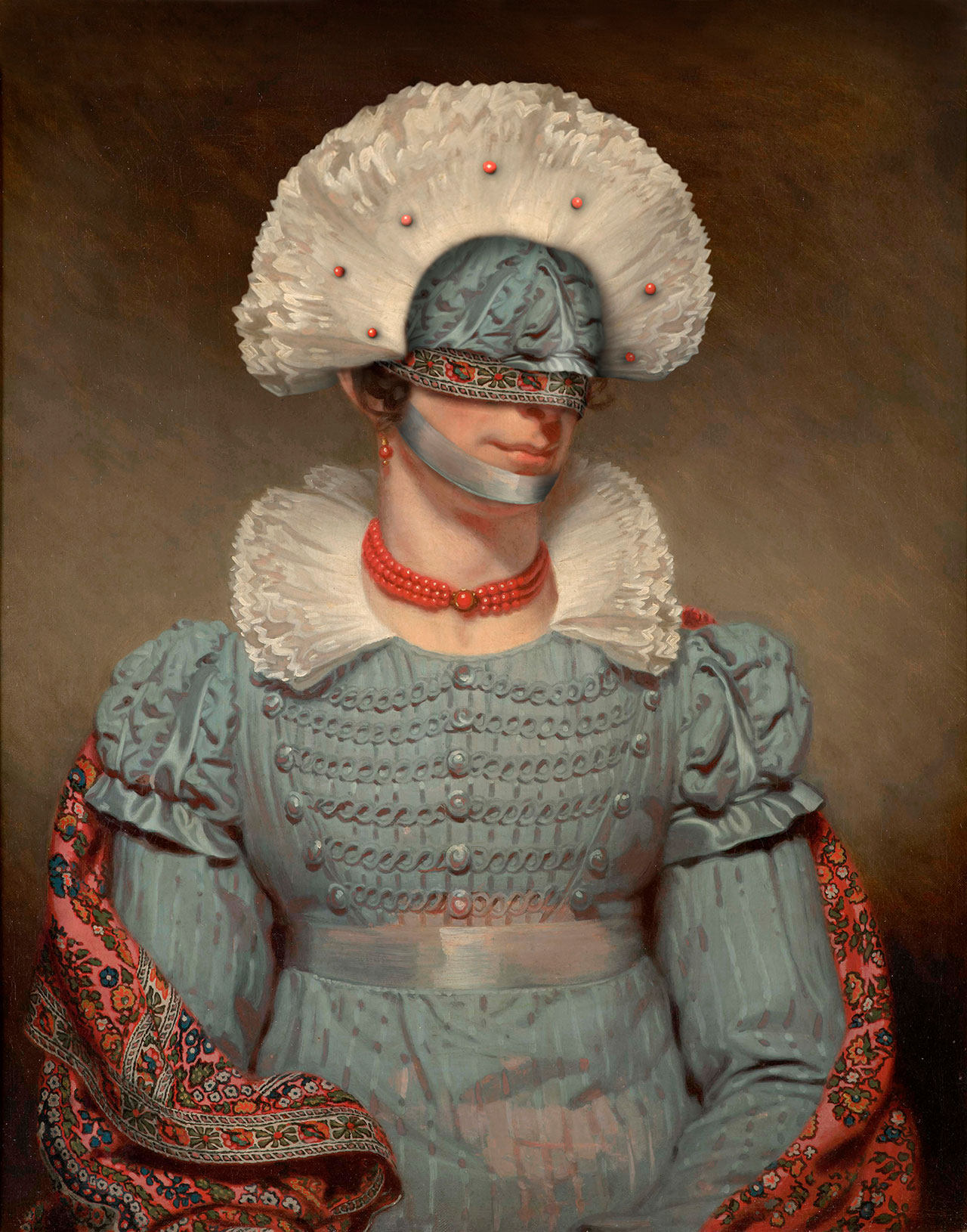
Volker Hermes, Hidden Hodges III, 2020.
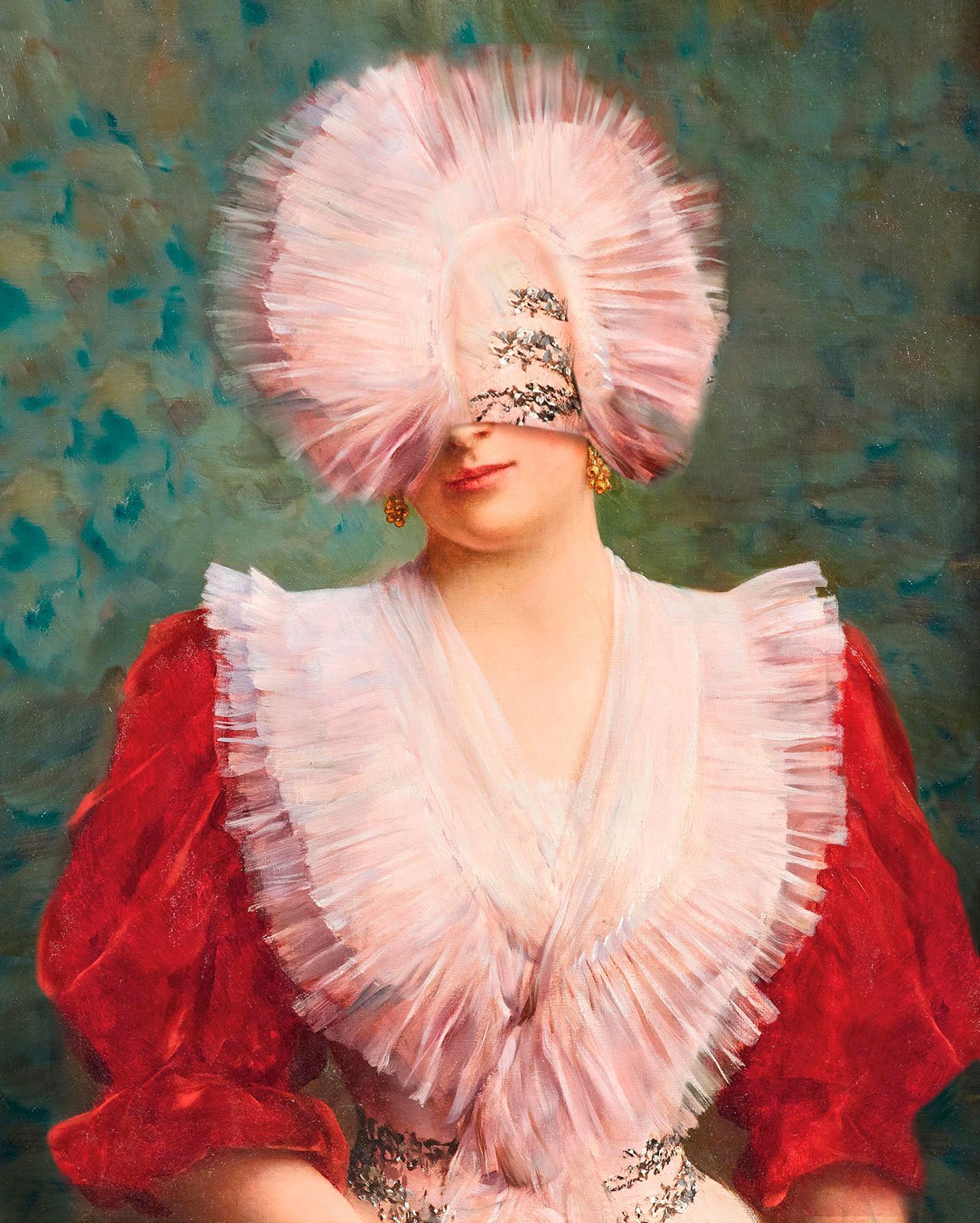
Volker Hermes, Hidden von Blaas II, 2020.
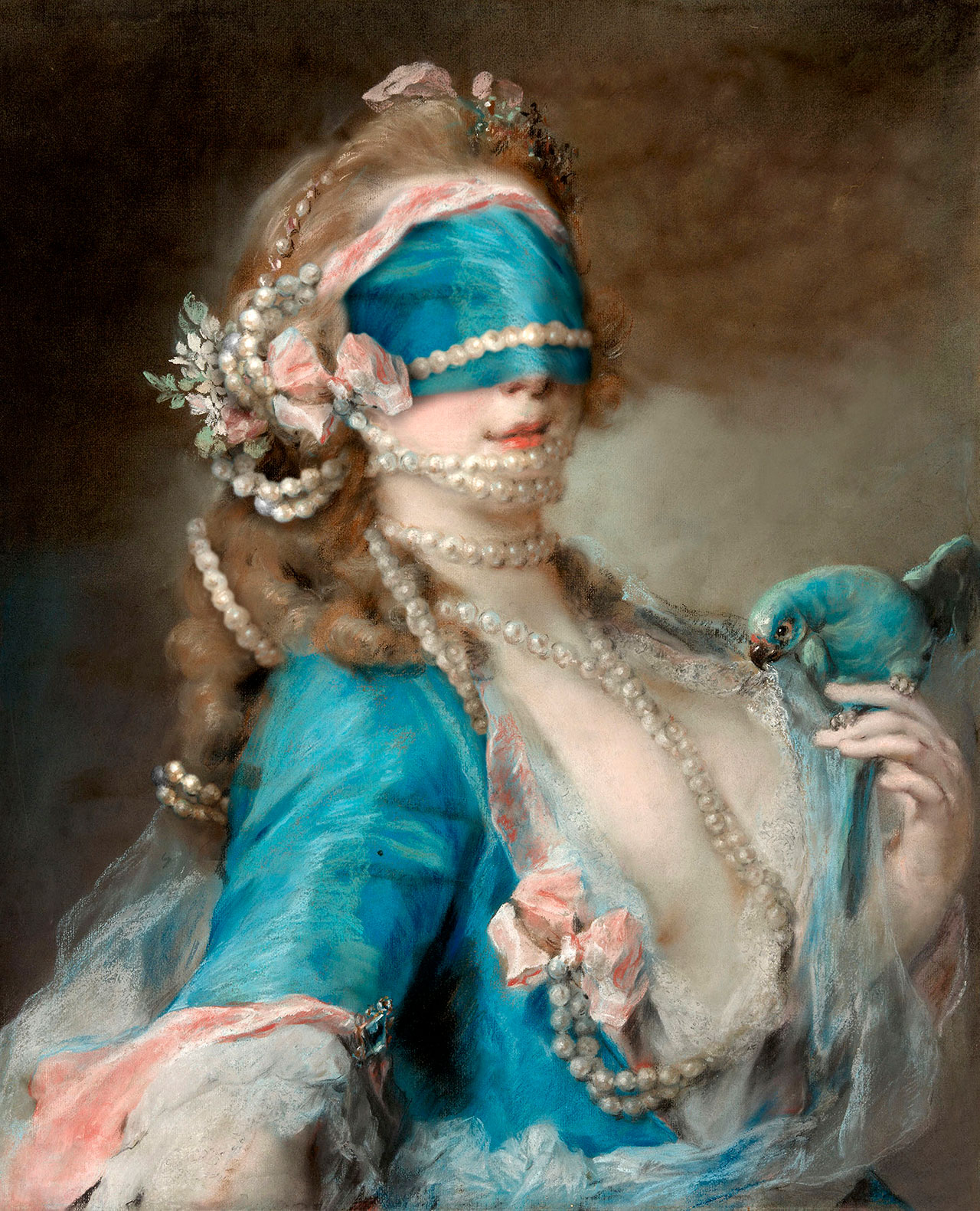
Volker Hermes, Hidden Carriera III, 2020.
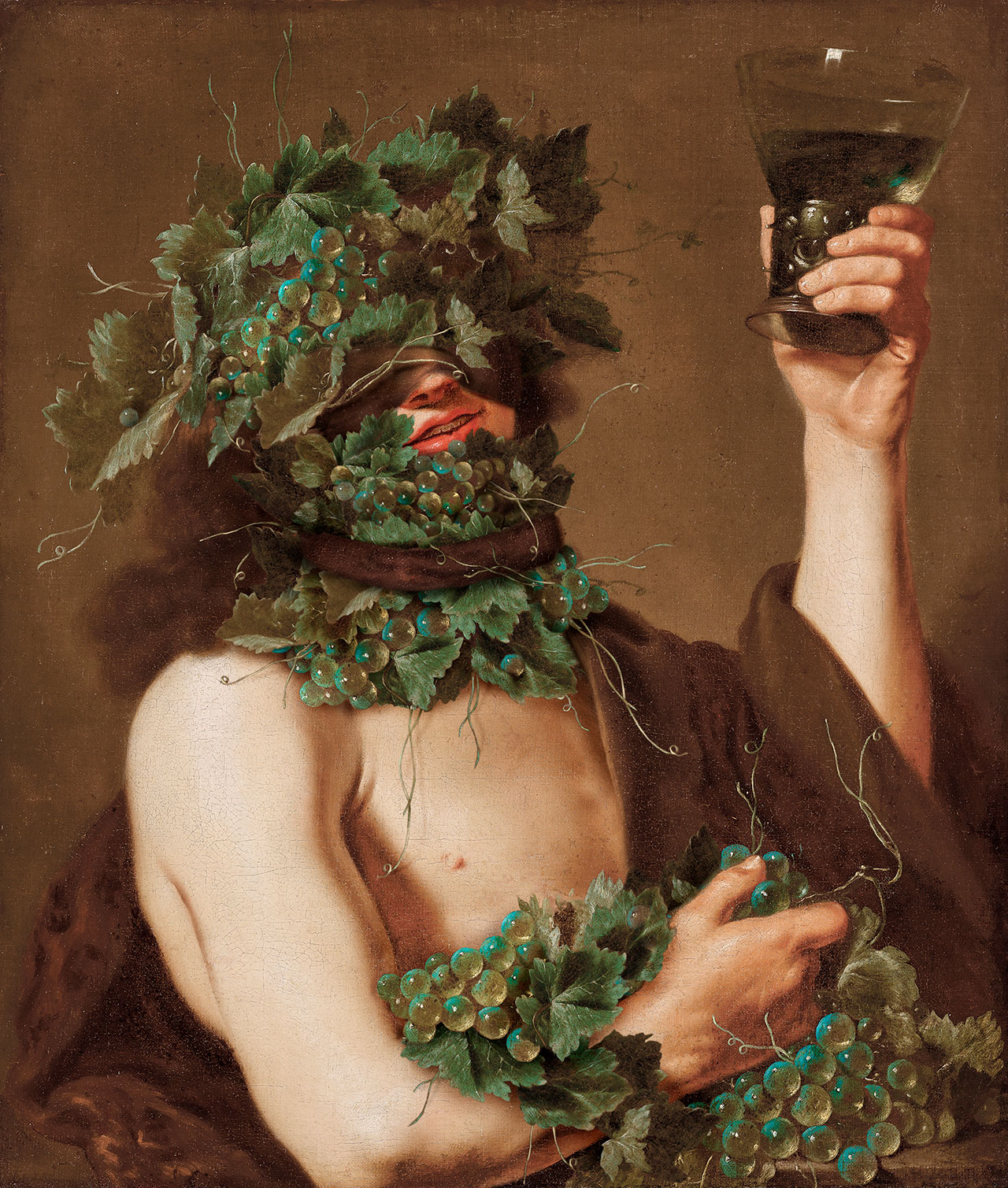
Volker Hermes, Hidden Couwenbergh, 2020
Who are your favourite Old Masters and why?
I can't really tell. I like so many artists from different eras, each one for very different reasons.
What criteria do you use when choosing the paintings that you’re going to use for your photo-collages? Do you search for specific subjects or do certain paintings just speak to you?
The paintings find me. Most often, I browse through archives and collections and pick up works that talk to me. It depends on my mood; sometimes the Renaissance touches me, sometimes it’s Baroque or the 19th century.
How painstaking and time-consuming is the creative process behind the series? How do you achieve such realistic results?
I have tremendous respect for the amazing artworks I use in my work. I don't want to destroy them; I want to add a new perspective. That's why I decided to make my interventions as plausible as possible. A kind of second version under alternative aspects. I suppose it helps a lot that I'm a painter and that I know something about the painting process which allows me to stay very close to the original. Once I've decided on the general concept, an incredible amount of detailed work follows which can take forever. For example, when I move hundreds of pearls individually, or isolate and recombine individual brushstrokes. Sometimes it feels like I'm painting myself, but other times I think I'm just crazy because of the amount of effort involved.
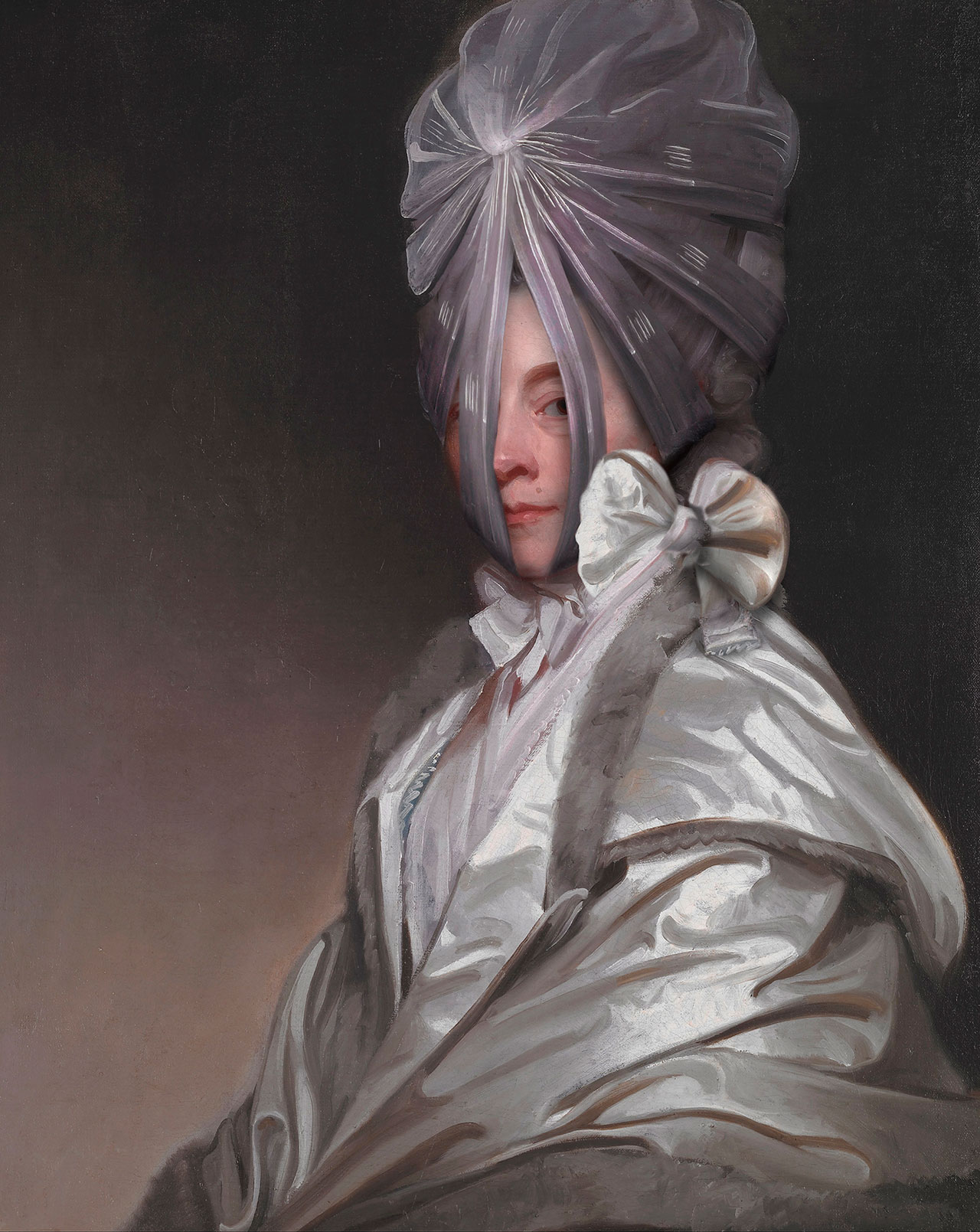
Volker Hermes, Hidden Romney, 2021.
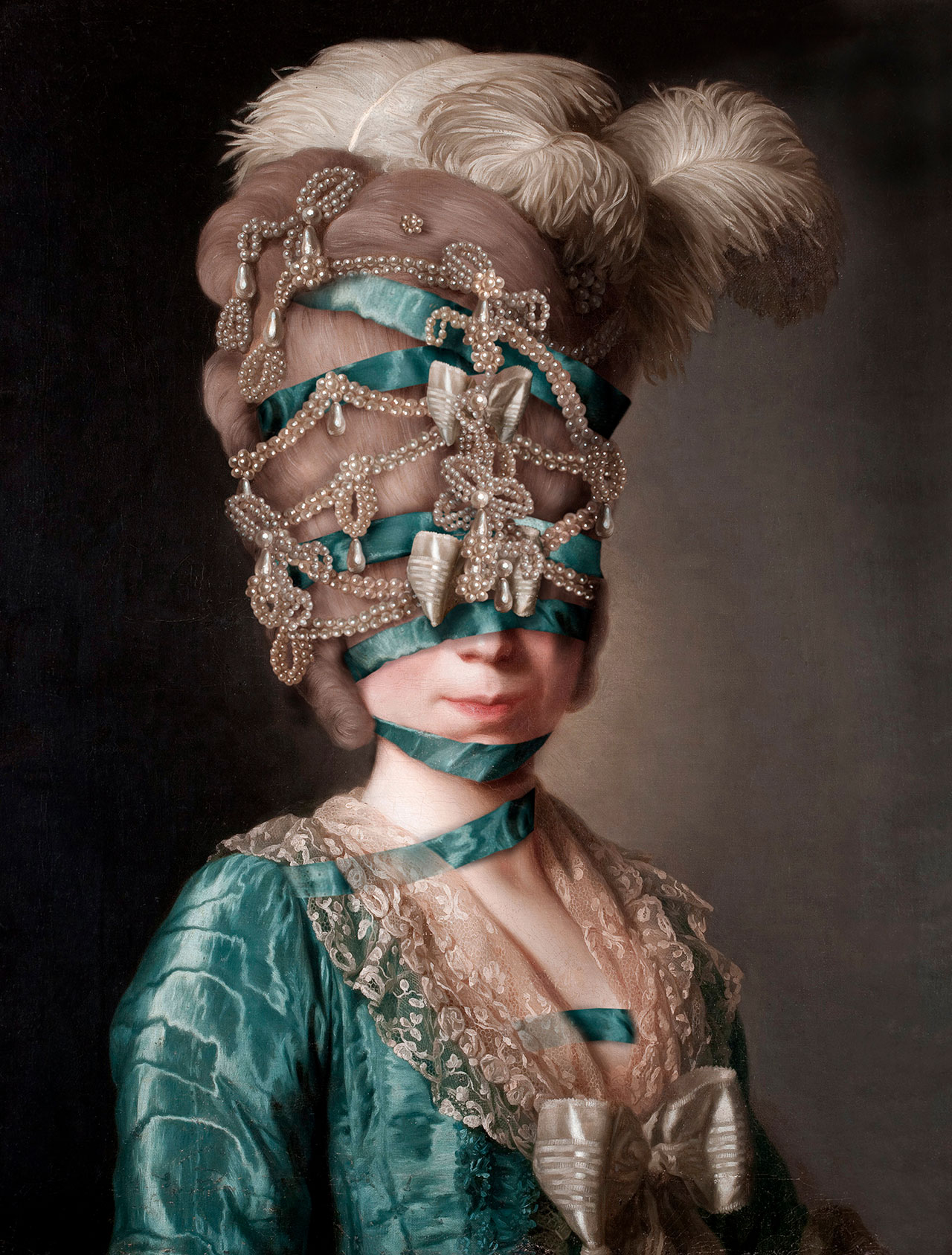
Volker Hermes, Hidden Roslin, 2019.
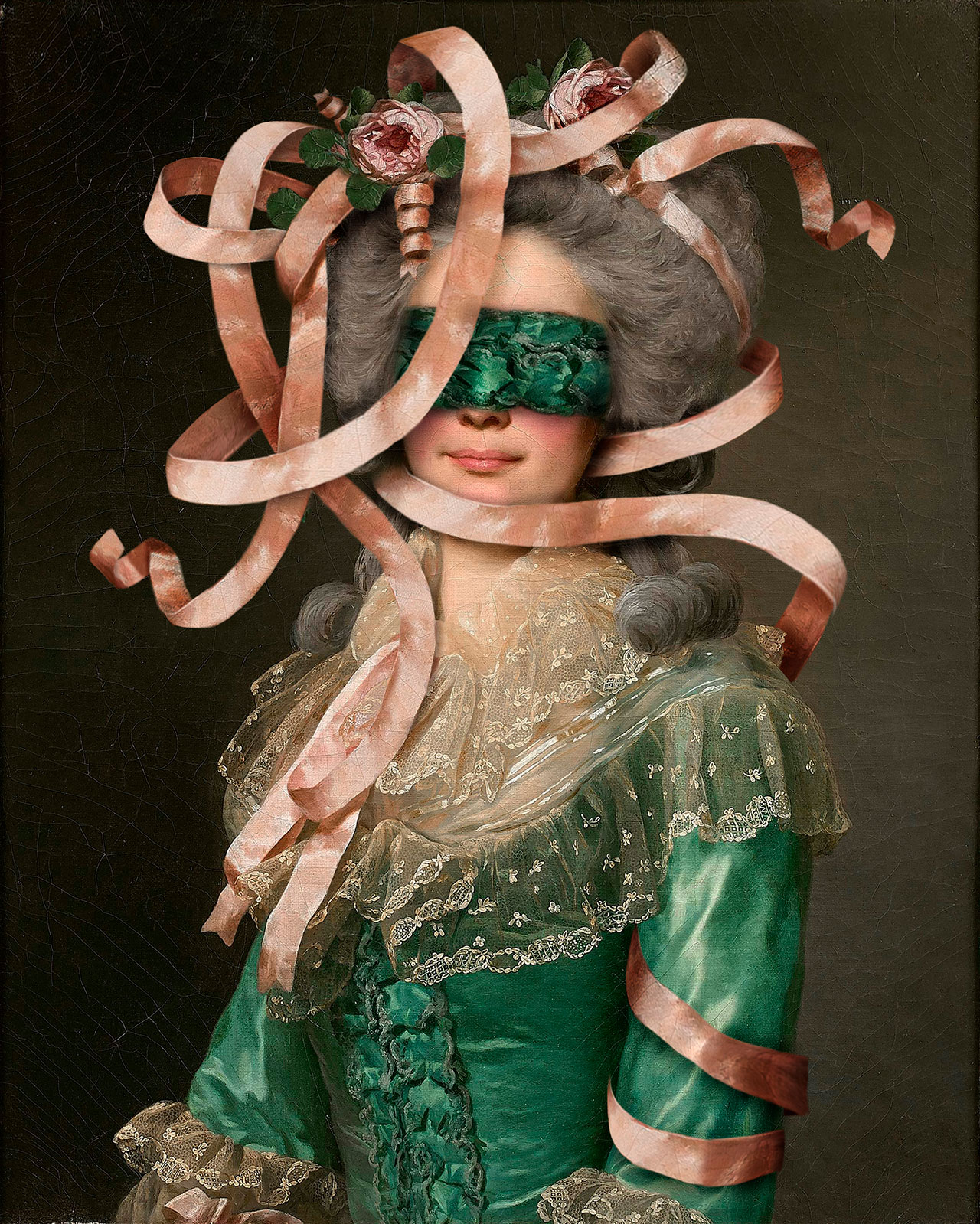
Volker Hermes, Hidden Roslin VI, 2021.
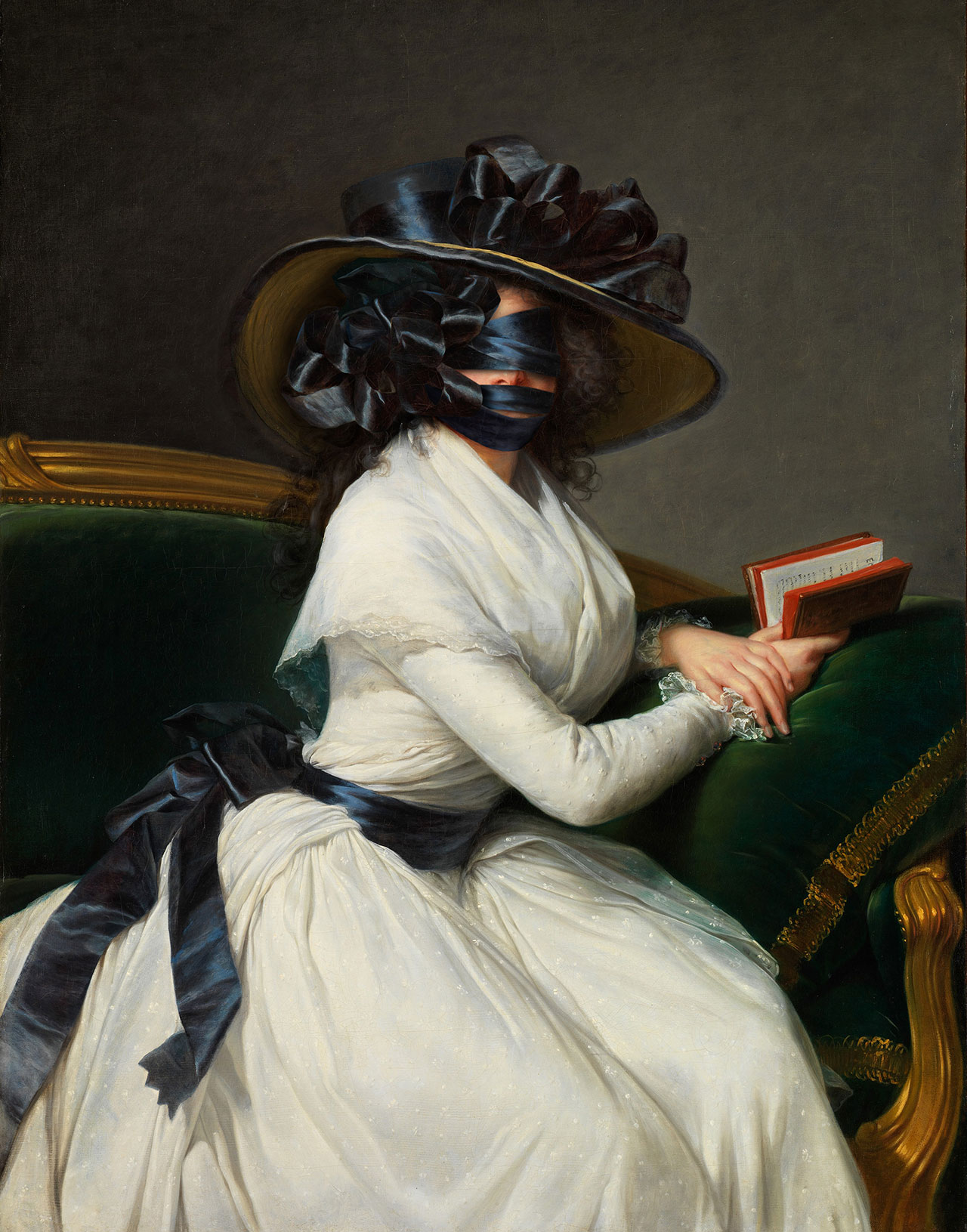
Volker Hermes, Hidden Vigee le Brun, 2019.
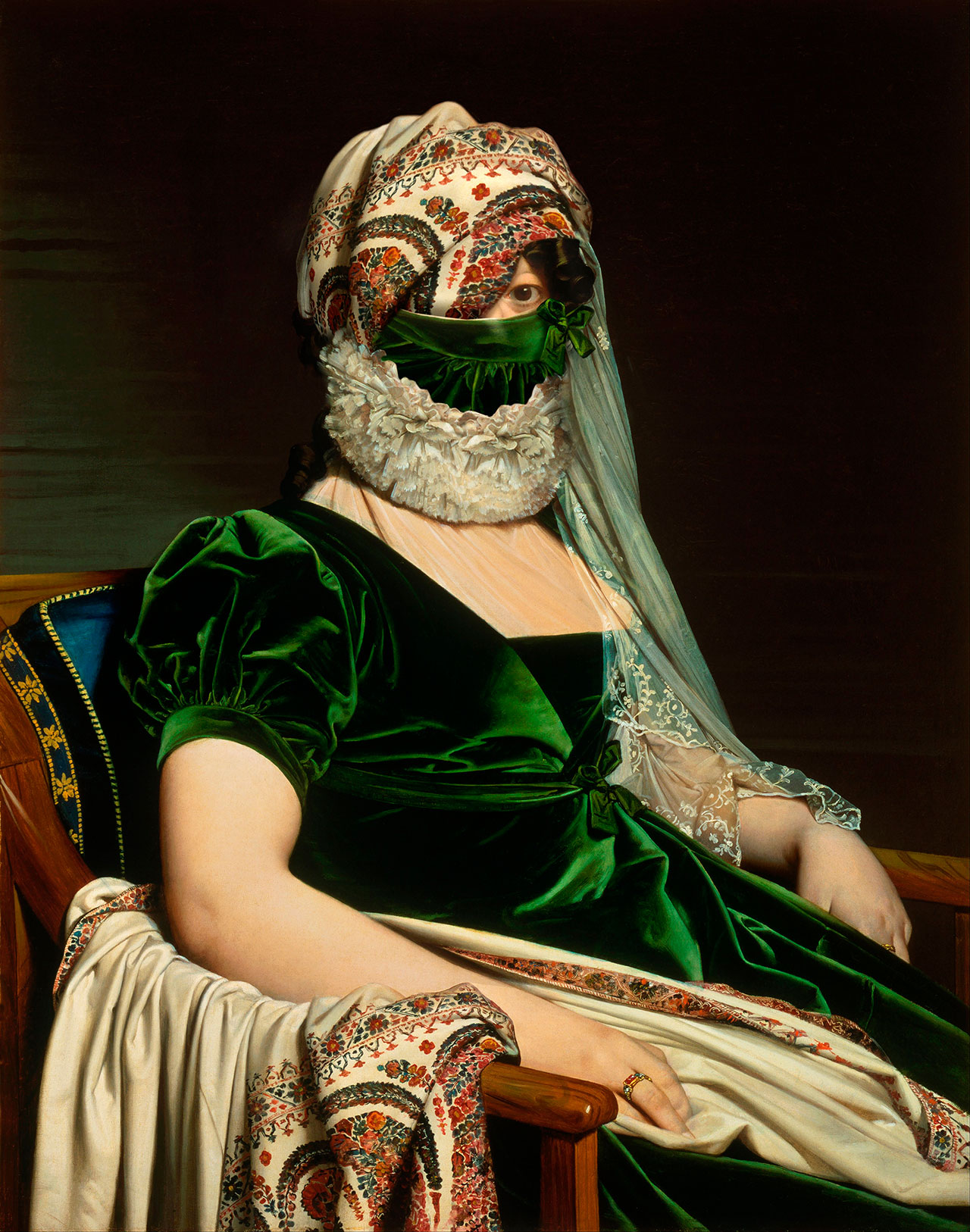
Volker Hermes, Hidden Ingres, 2020.
You have a good eye for fashion as the exquisite detailing of your work attests. Where does your interest in fashion stem from?
I 'm not a part of the fashion circus; I always dress the same. But clothing codes have always interested me because they are an essential part of our lives; it’s a part of our daily communication. I particularly find it interesting that although such codes exist in historical paintings, we no longer understand them because societies have changed so much. It's the theoretical background that matters to me.
There’s something quite whimsical, almost satirical, in how you manipulate your subjects. Do you intentionally use humour, and to what effect?
Basically, I guess I have a particular sense of humour. But in addition, ironic exaggerations can unsettle particular positions without being didactic. For example, the undisputed masculine, toxic claim to power that appears in many portraits is much better exposed through humour. I don't need any long explanations for that. I just design a ridiculous ermine hat and immediately the hereditary title of the subject is questioned. It's very on point. So, yes, I do use humour, but sometimes I'm just playful.
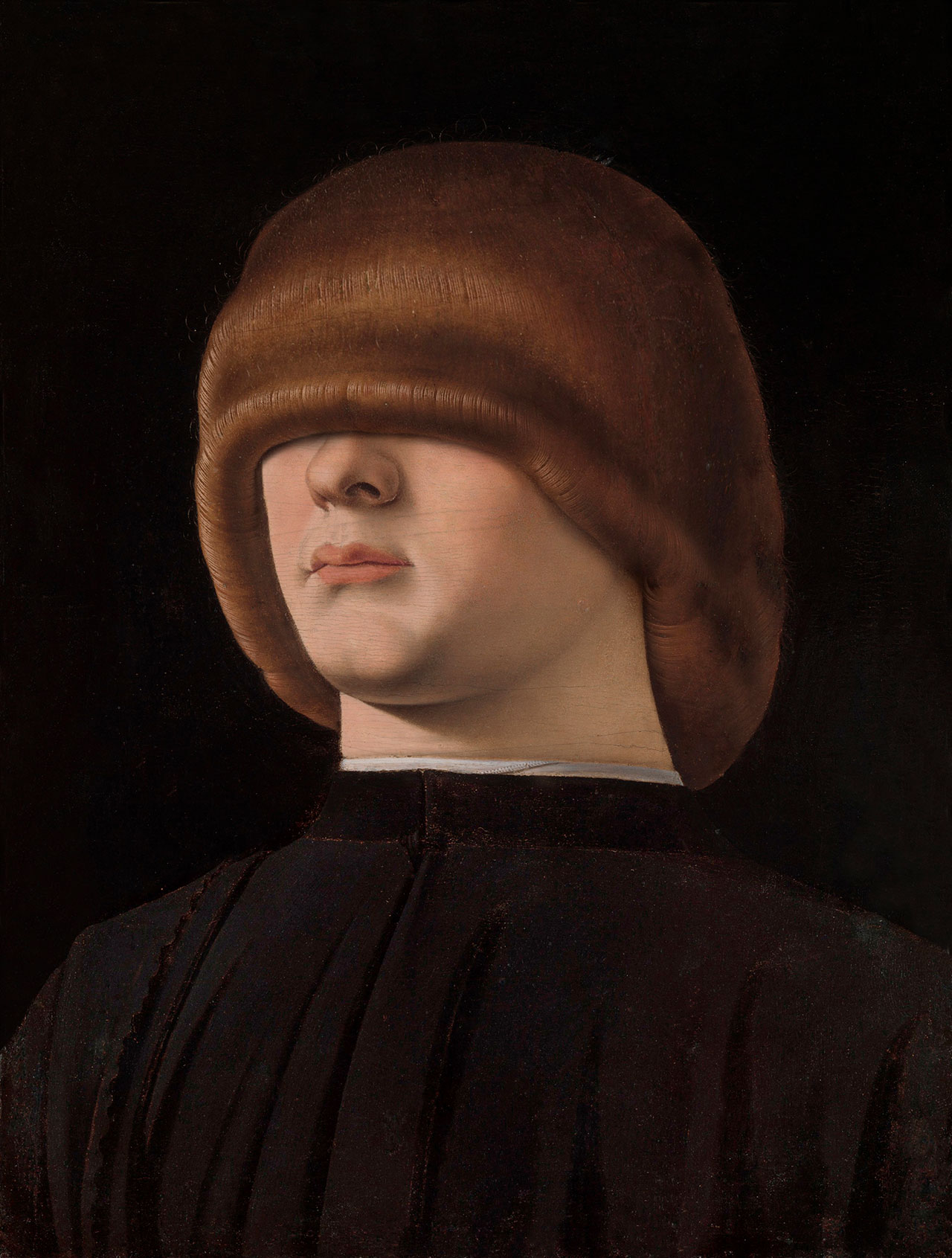
Volker Hermes, Hidden Jacometto, 2019.
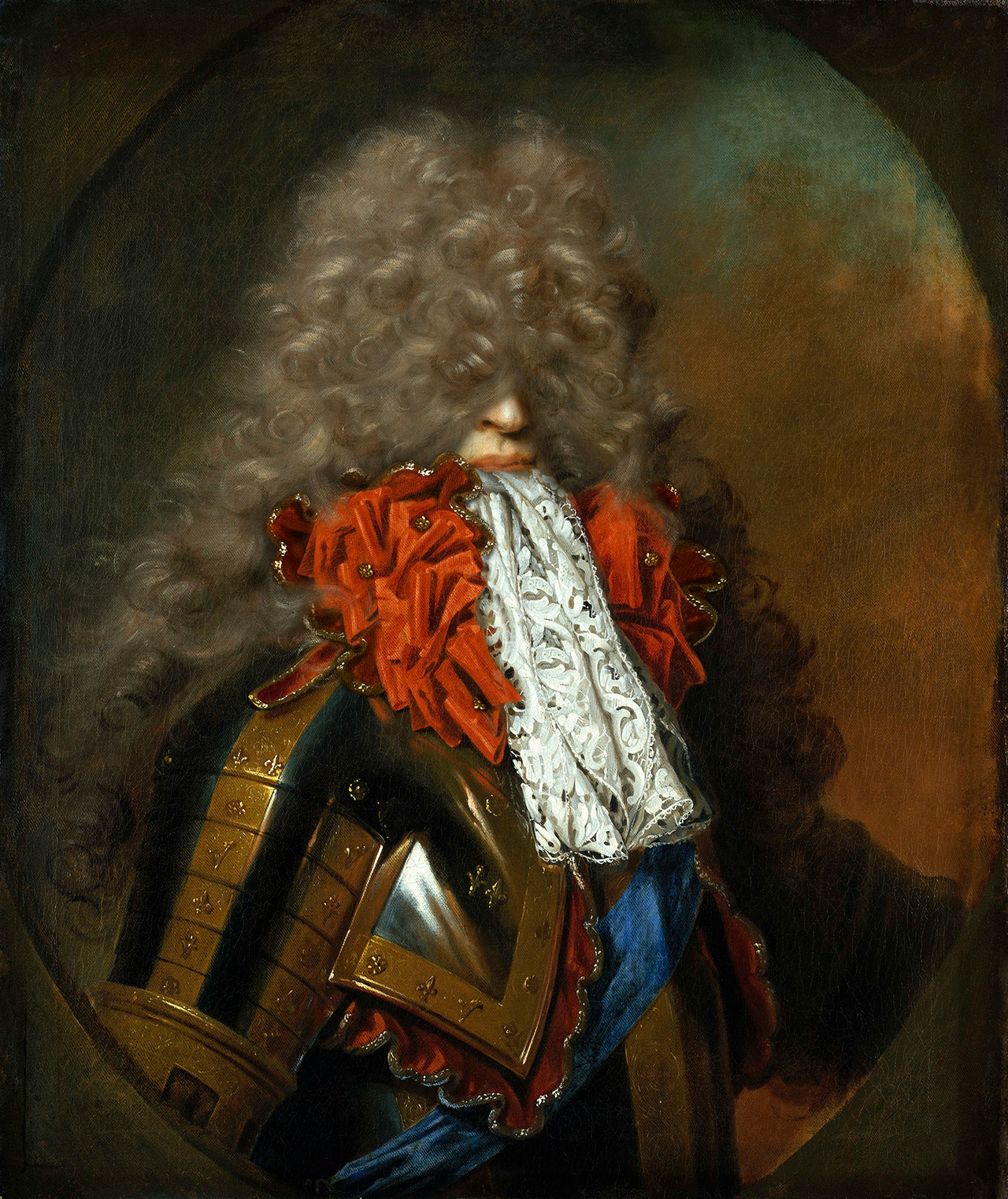
Volker Hermes, Hidden Largilliere V, 2021.
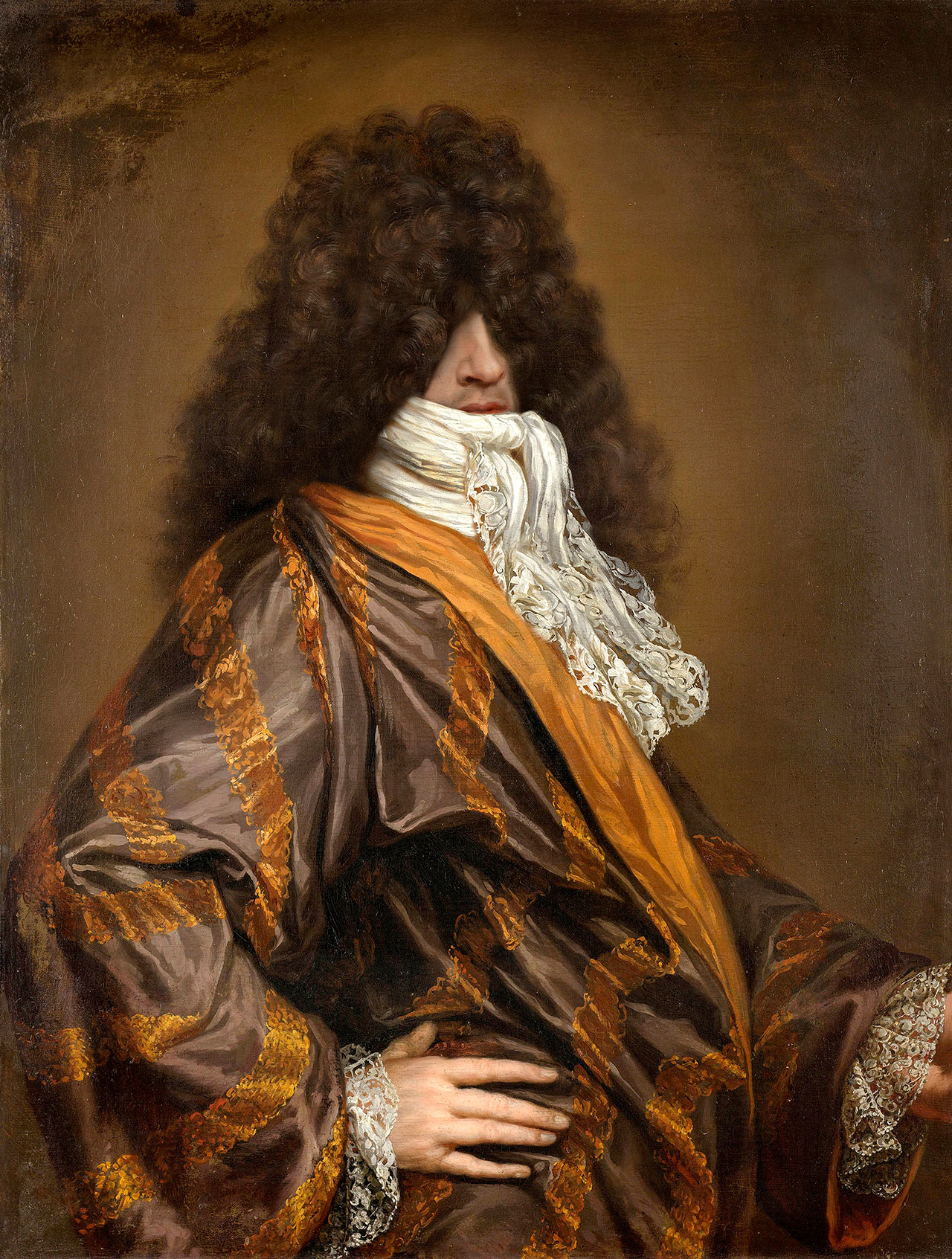
Volker Hermes, Hidden Leydecker, 2017.
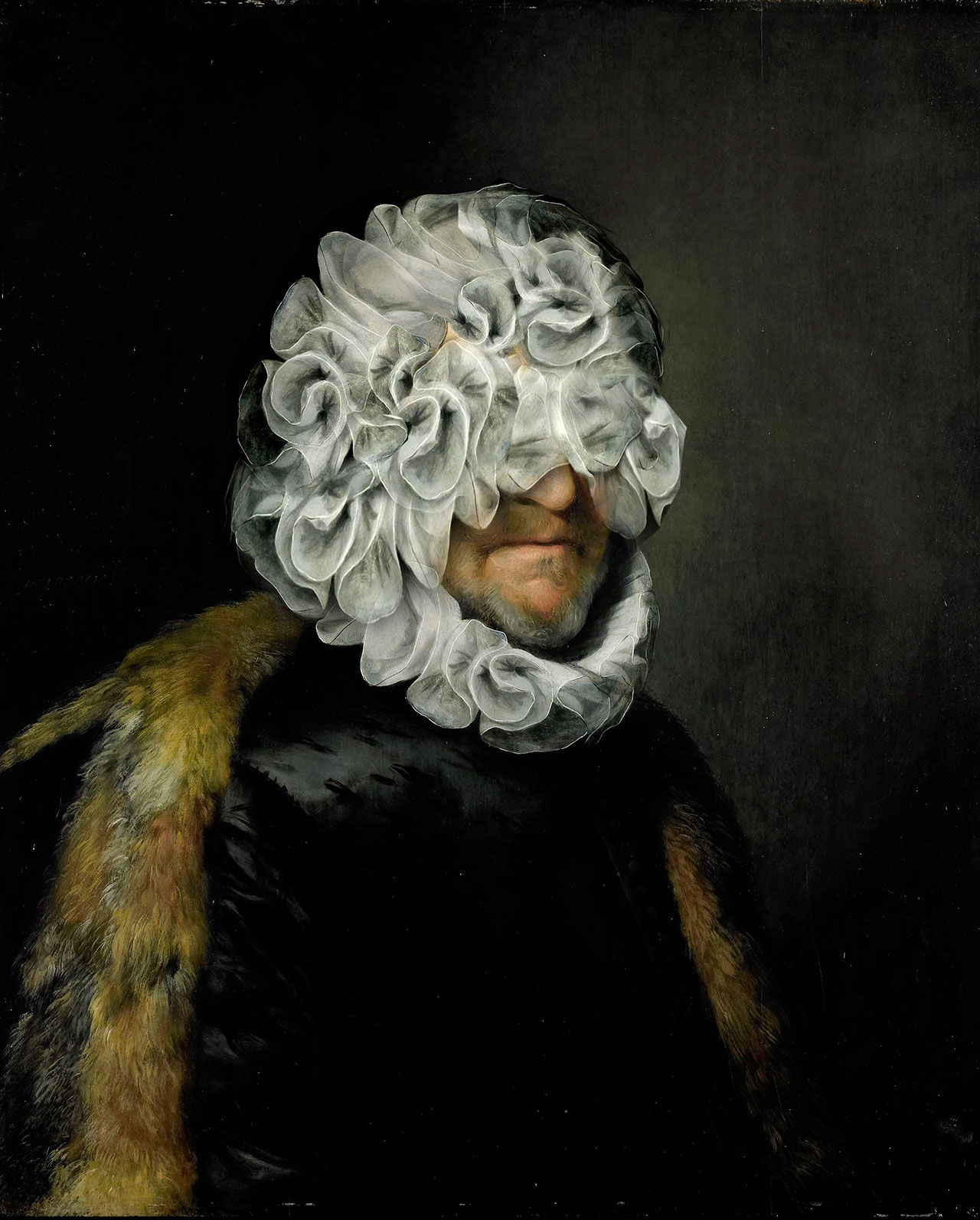
Volker Hermes, Hidden van Miereveld, 2017.
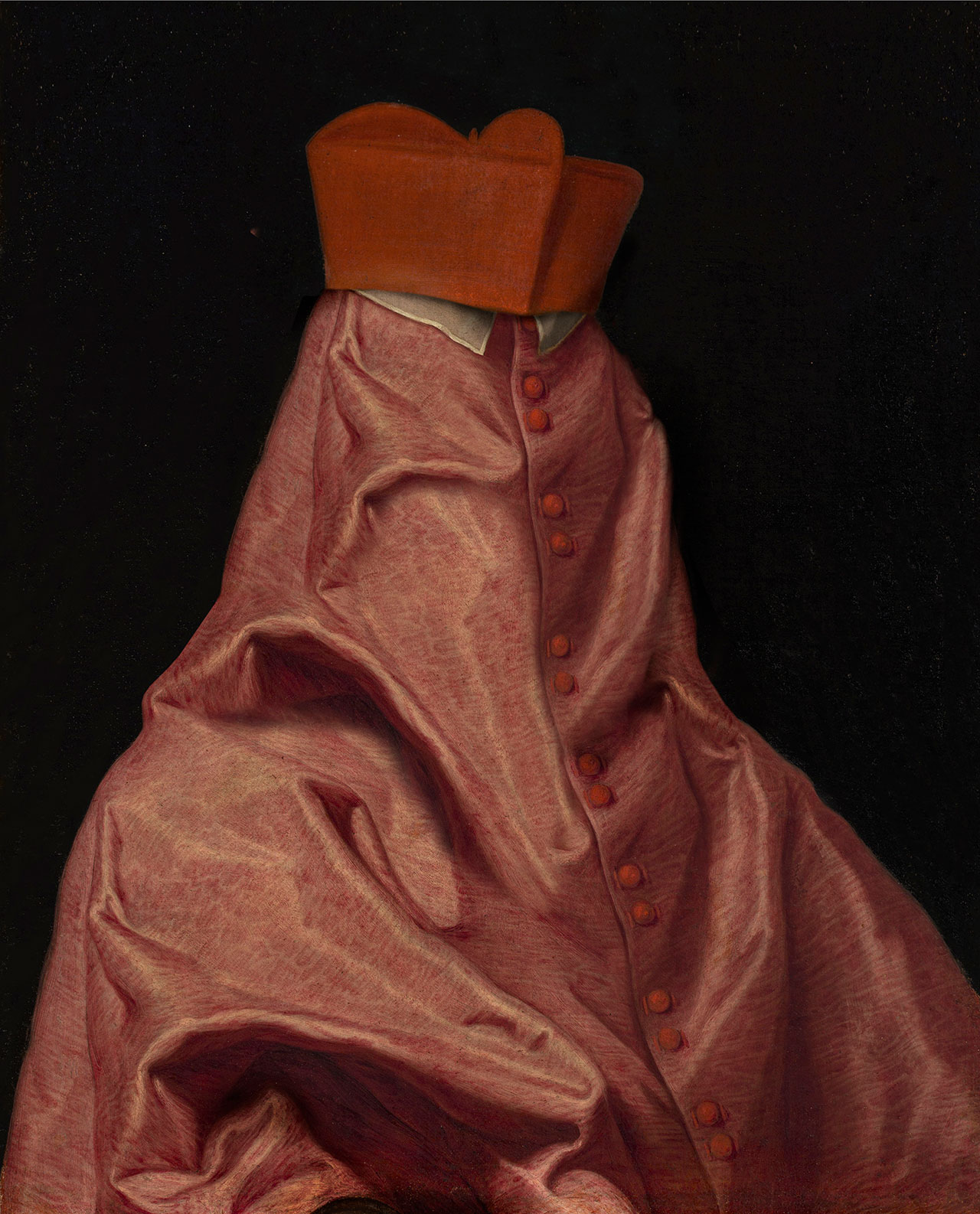
Volker Hermes, Hidden Il Baciccio II, 2020.
There are opposing attitudes within the artistic community in regards to social media, some lauding it as a useful tool for promotion and increased engagement, while others decry its role in the commodification of art. What’s your relationship with social media?
Even I, who consider myself quite conservative, believe that as artists we have to accept that our audience isn’t only institutions like galleries or museums, but social media users, and that’s a great thing. Of course, nothing beats experiencing art in real life, but these channels open up new possibilities for finding art and then engaging with it. It's very easy to get into conversation with artists, the barriers are very low, the communication is very simple, it's somehow very democratic.
Myself, I have not been on Instagram that long - I still don't understand a lot of things! I recognize that there are commercial interests promoting certain practices that I don't necessarily like. From the beginning I decided not to be a slave to an algorithm and not to post crap just to get traffic on my page. I always say: I am an artist who is on Instagram, not an Instagrammer who posts art. My formats haven't changed, neither has my unconditional will to create what I consider good works. I think that's important. You have to keep this critical independence towards this medium, just like you have to keep your independence when it comes to the curators, museum executives and the art scene in general. Sometimes that's actually even more difficult than dealing with the Instagram machine.
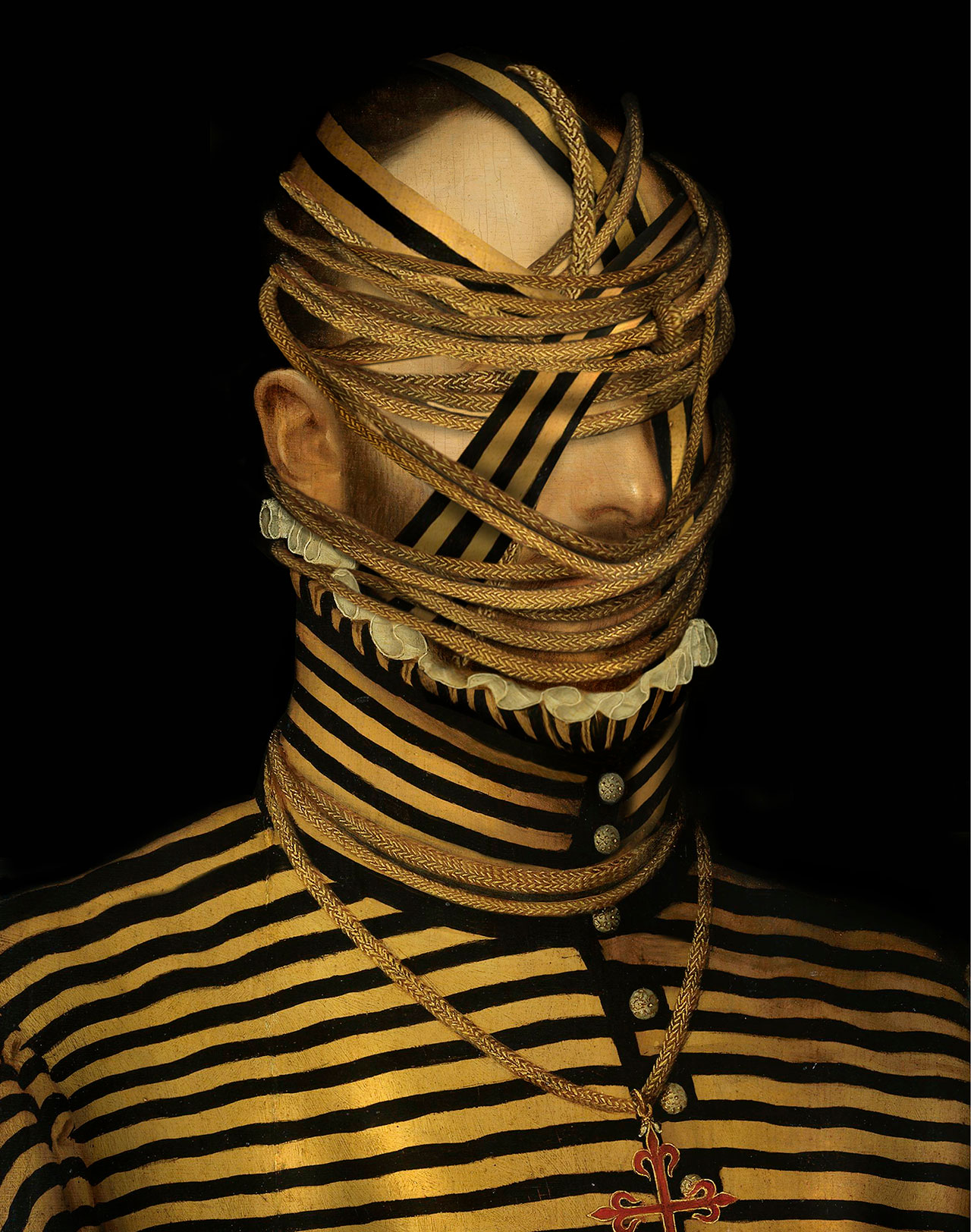
Volker Hermes, Hidden Pourbus, 2015.
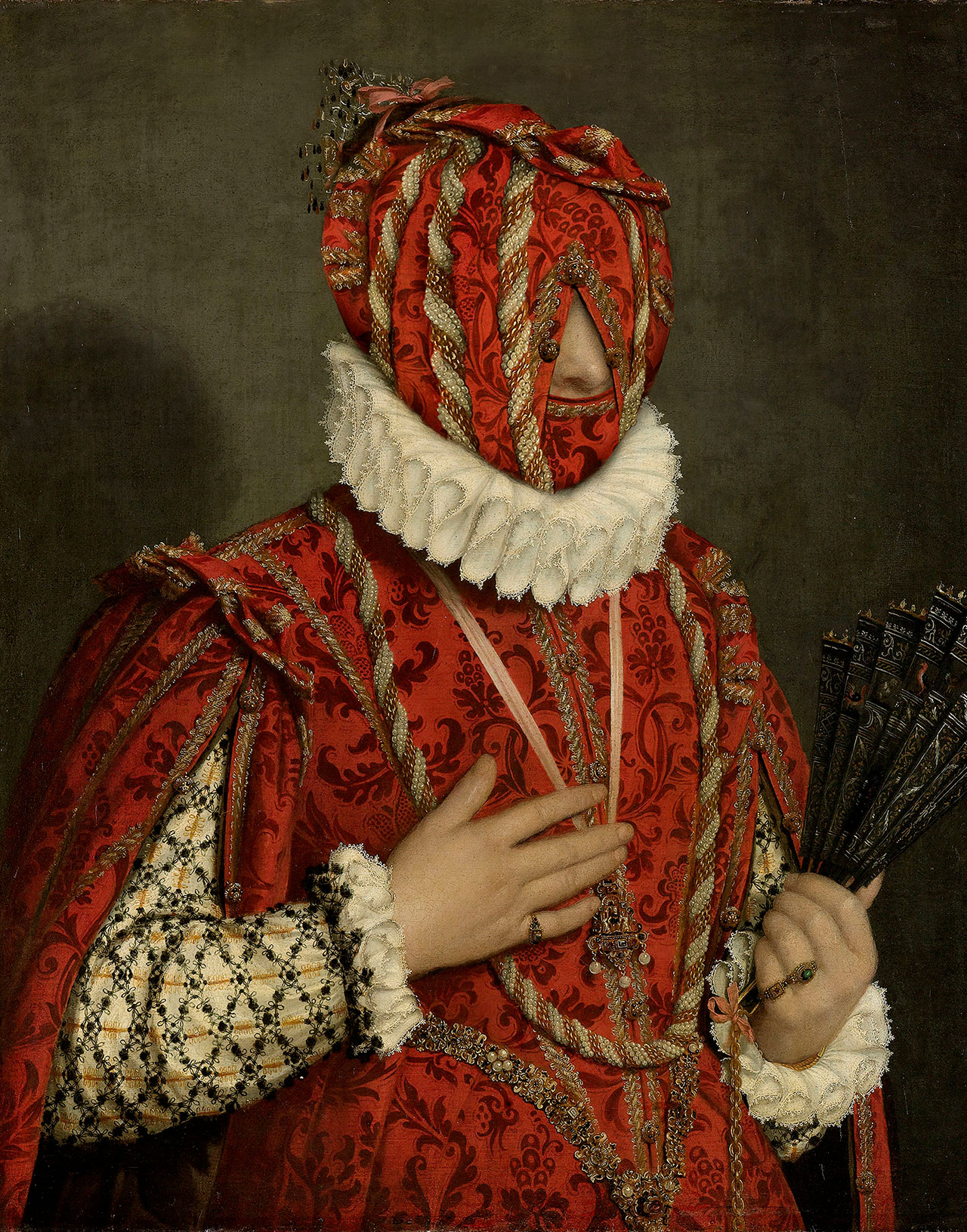
Volker Hermes, Hidden Moroni, 2015.
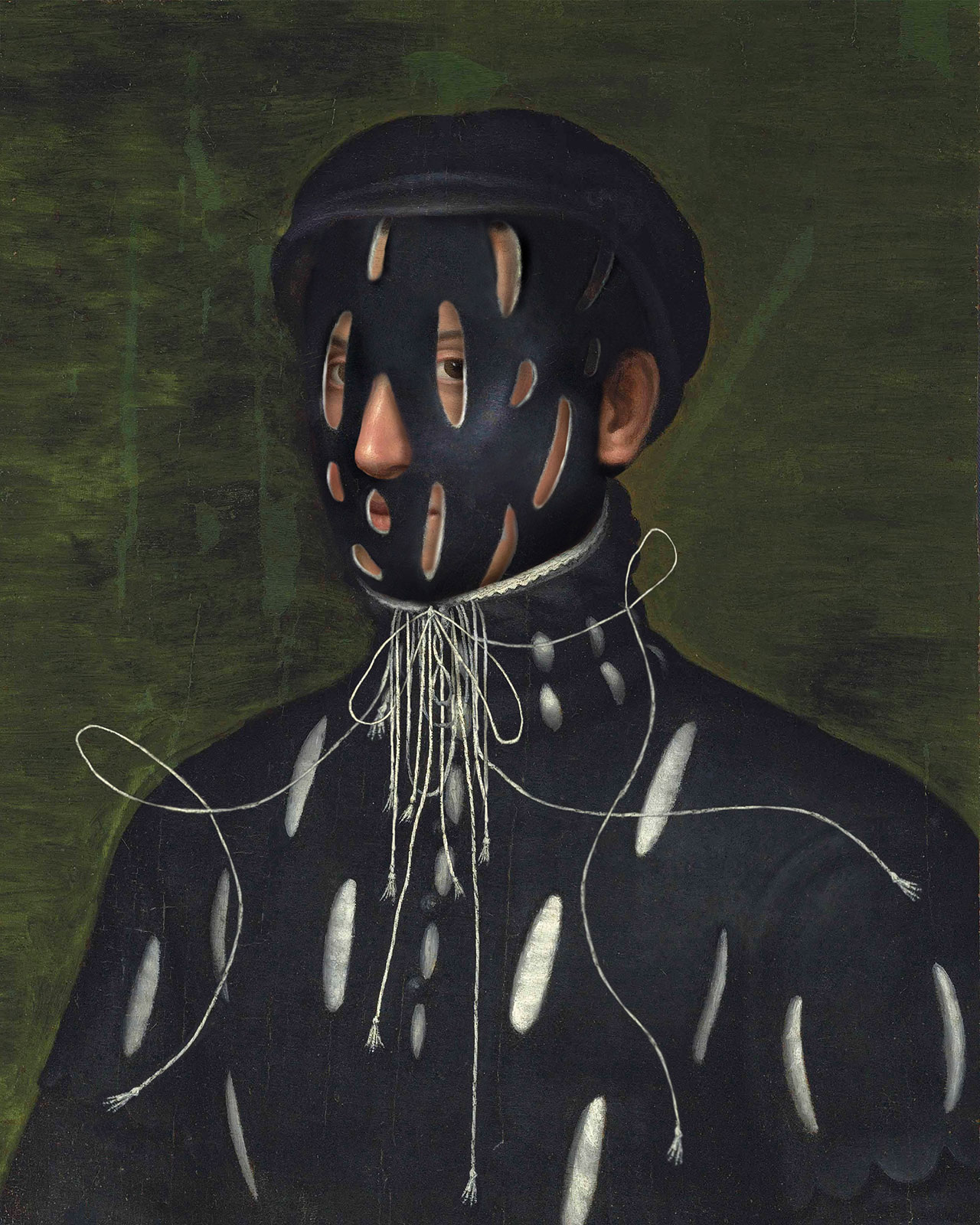
Volker Hermes, Hidden North Italian, 2021.
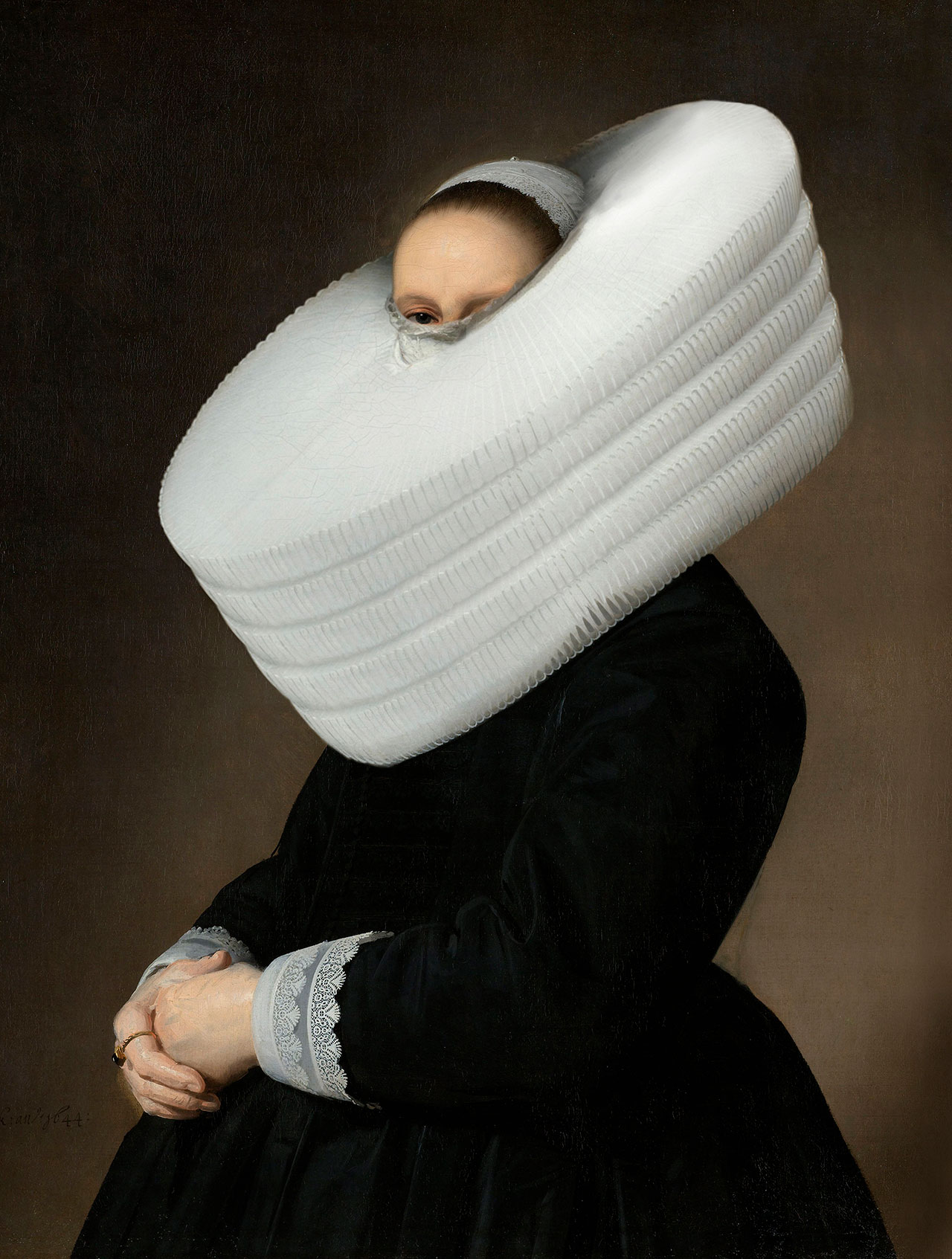
Volker Hermes, Hidden Hals (Verspronck), 2015.
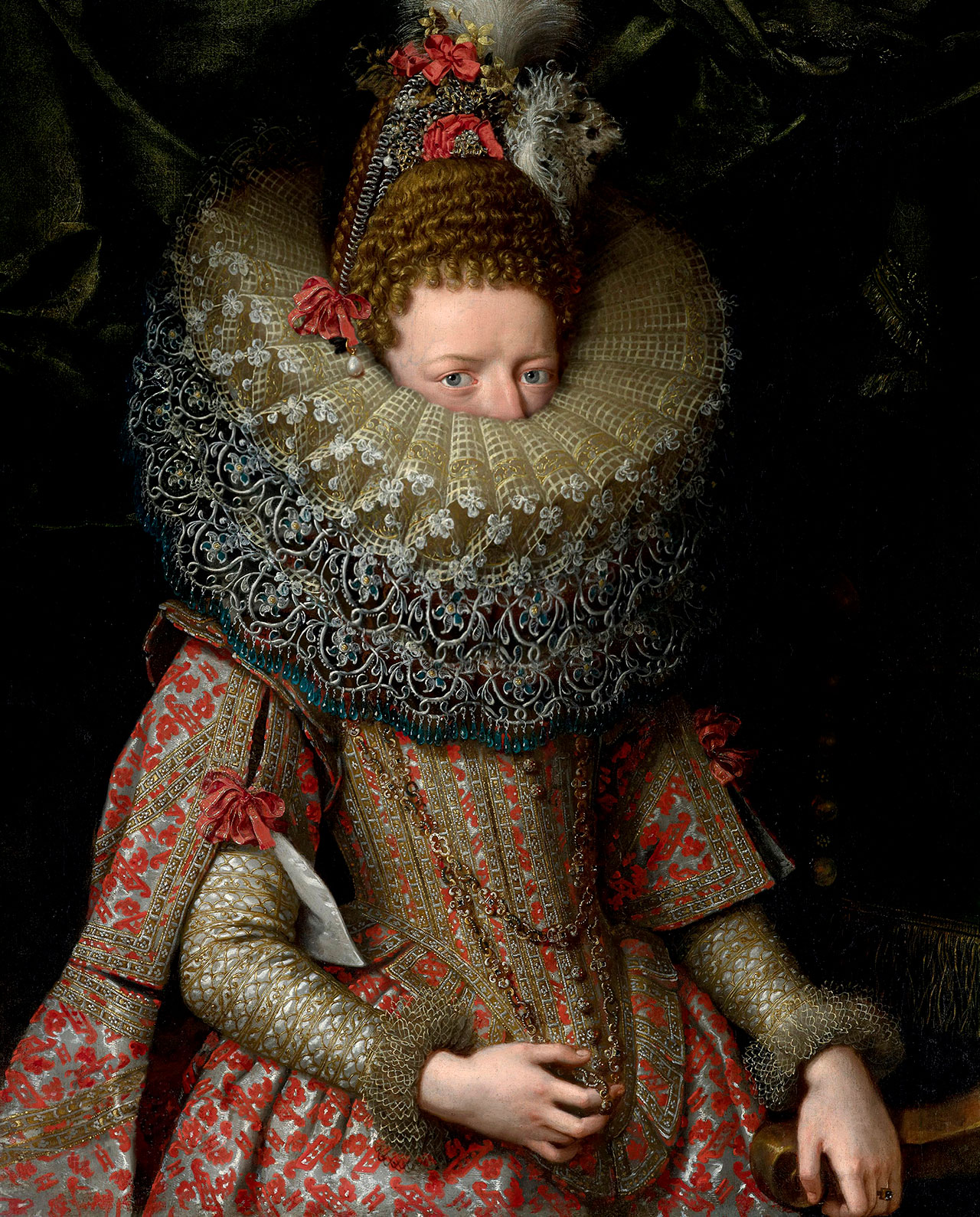
Volker Hermes, Hidden Pourbus V, 2019.
You have been working on the series for quite some time now but it was the pandemic that made your work such a sensation. Is it a kind of validation of the layered complexity of the Old Masters’ work which is often considered parochial? How has the pandemic influenced your output?
It’s very important to me to point out the complex levels of [historical] portraits. However, my goal isn’t to explain everything, but to make you look at them in a different way. Portraits were actually made to talk to us, but many of their messages are encoded and can be missed on first sight. We just have to learn to get involved with these paintings again.
During the pandemic, we realized how we missed the dialogue with art in museums. A lot of it was shifted to the Internet, and suddenly my work was “discovered” and my artistic approach lauded. The great reception hasn’t changed my primary concept, but the many contacts have opened up terrific new opportunities. I'm more than grateful for that.
What are you working on right now? Any exhibitions on the horizon?
First of all, I have a daily appointment with wonderful portraits to work with. That's always the most important thing, to continue working. With that being said, I do have some exciting exhibitions planned. Fingers crossed; we’ll soon put the pandemic behind us so they can go ahead.
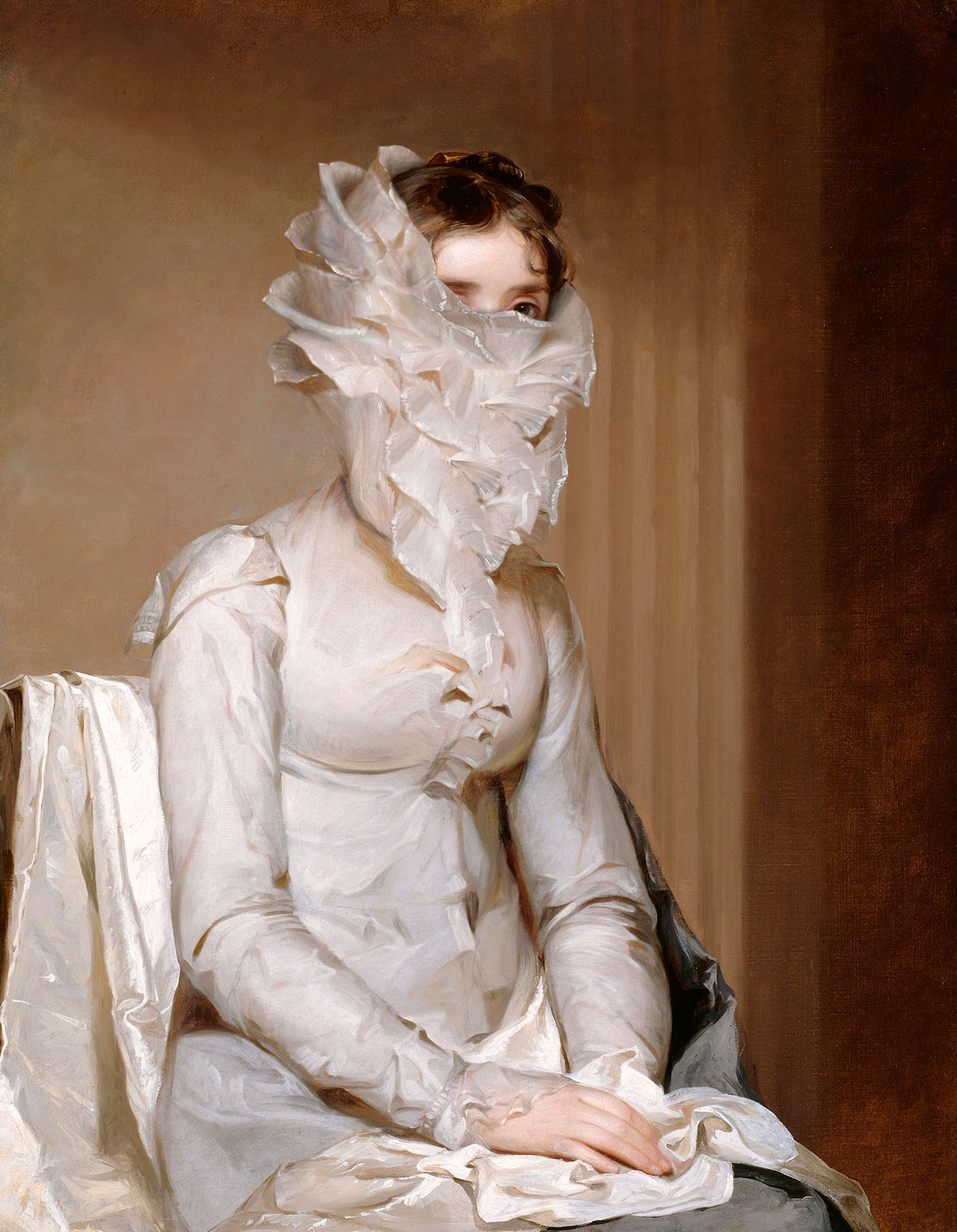
Volker Hermes, Hidden Sully, 2020.
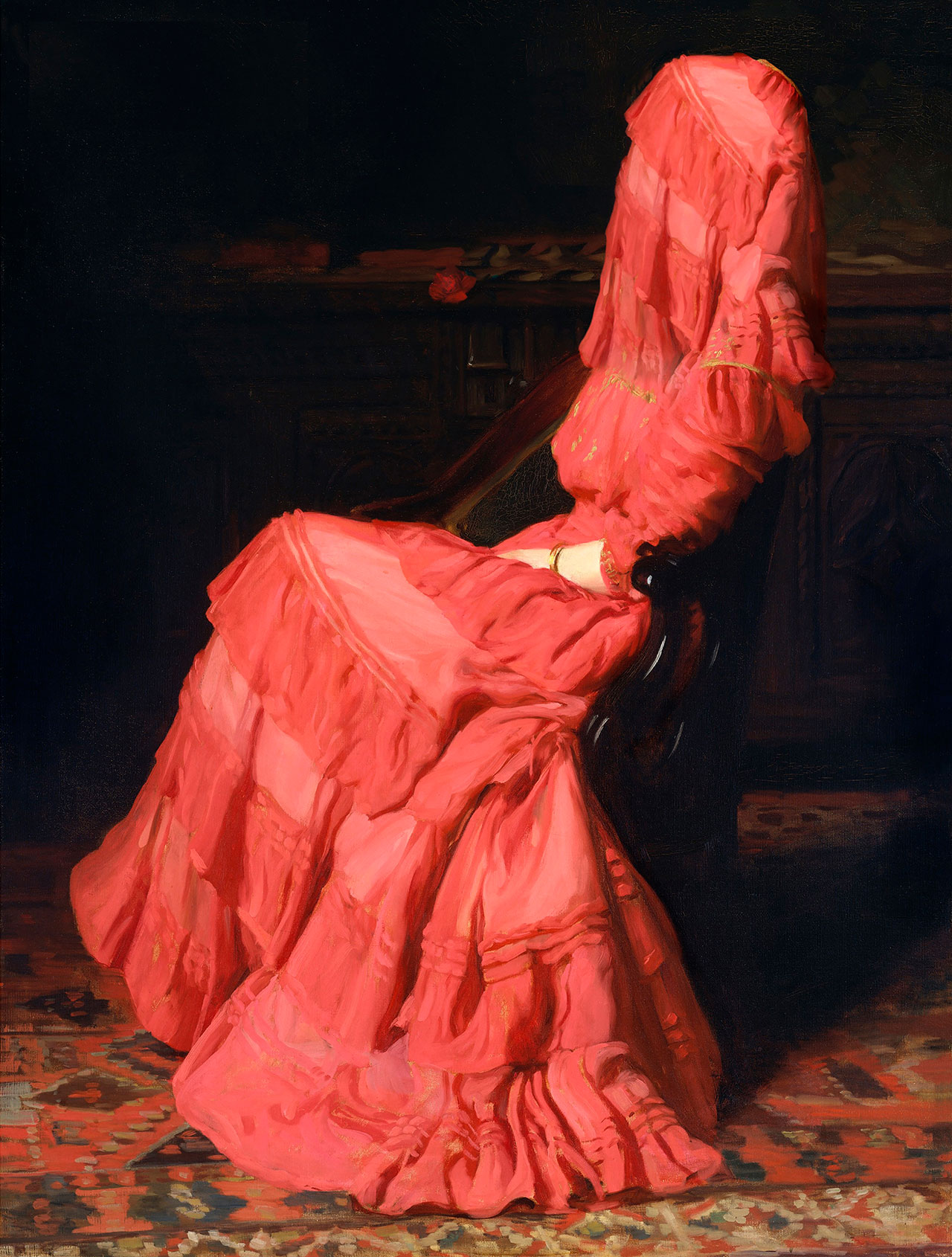
Volker Hermes, Hidden Anshutz, 2019.
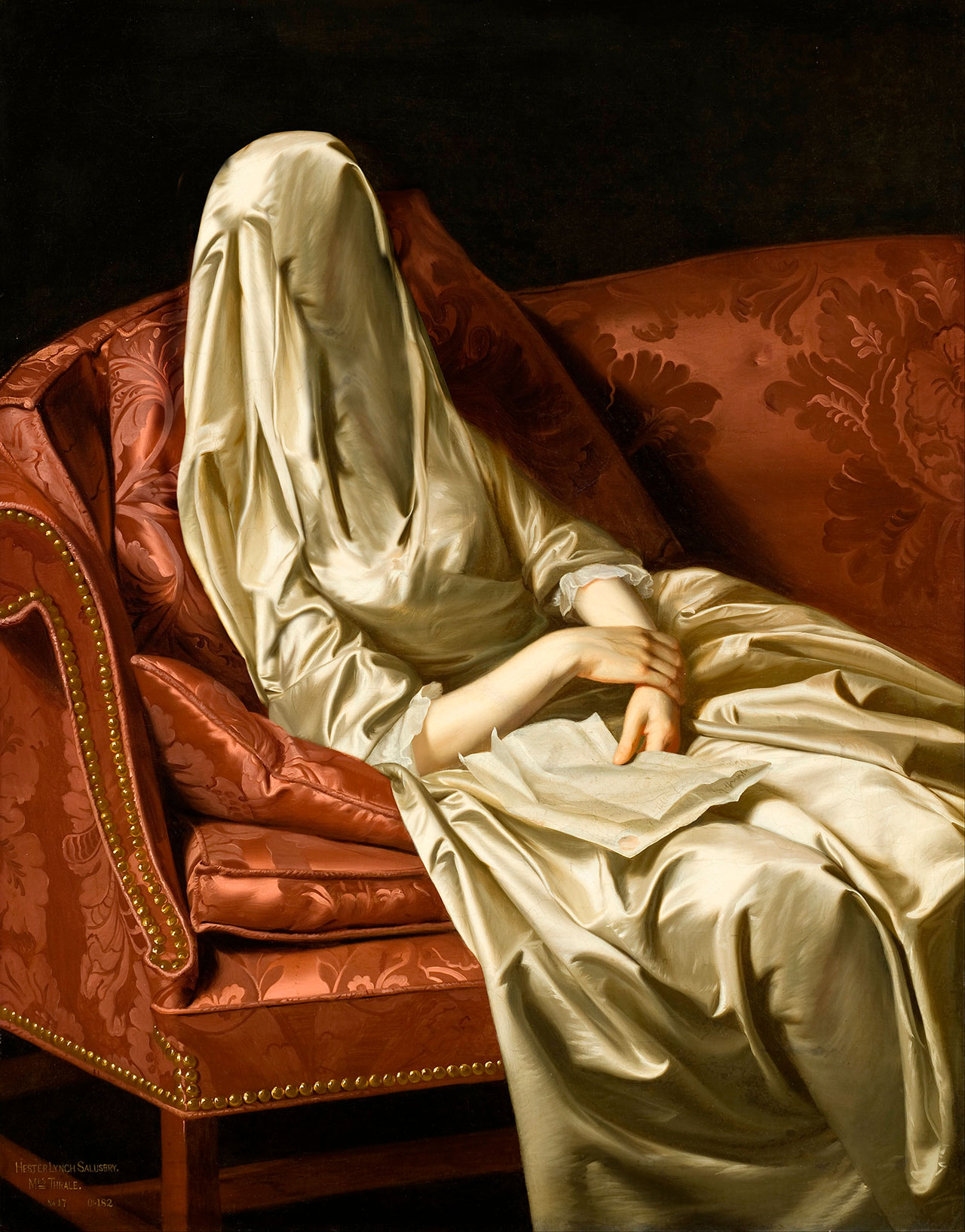
Volker Hermes, Hidden Singleton Copley, 2019.
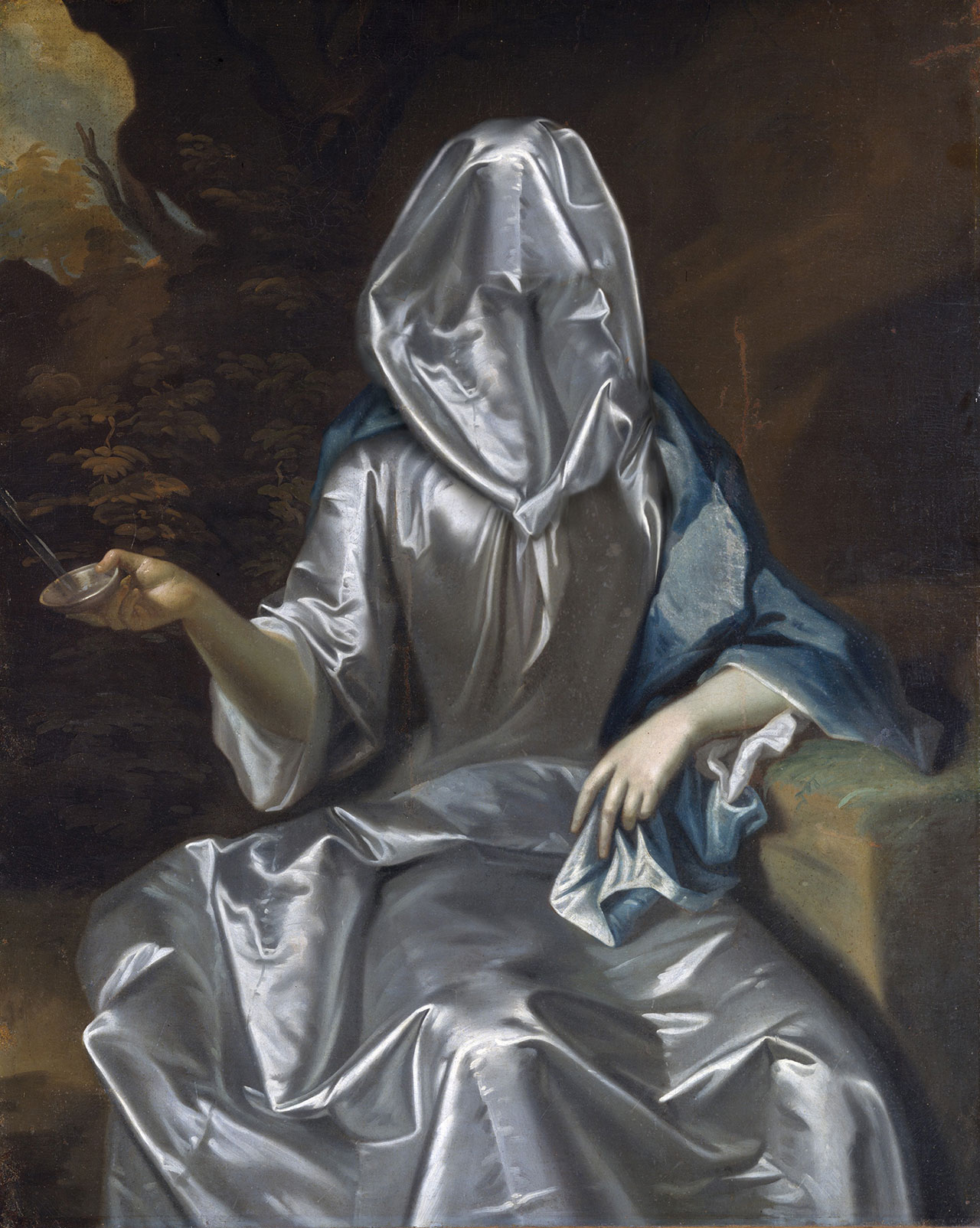
Volker Hermes, Hidden School of Kneller.
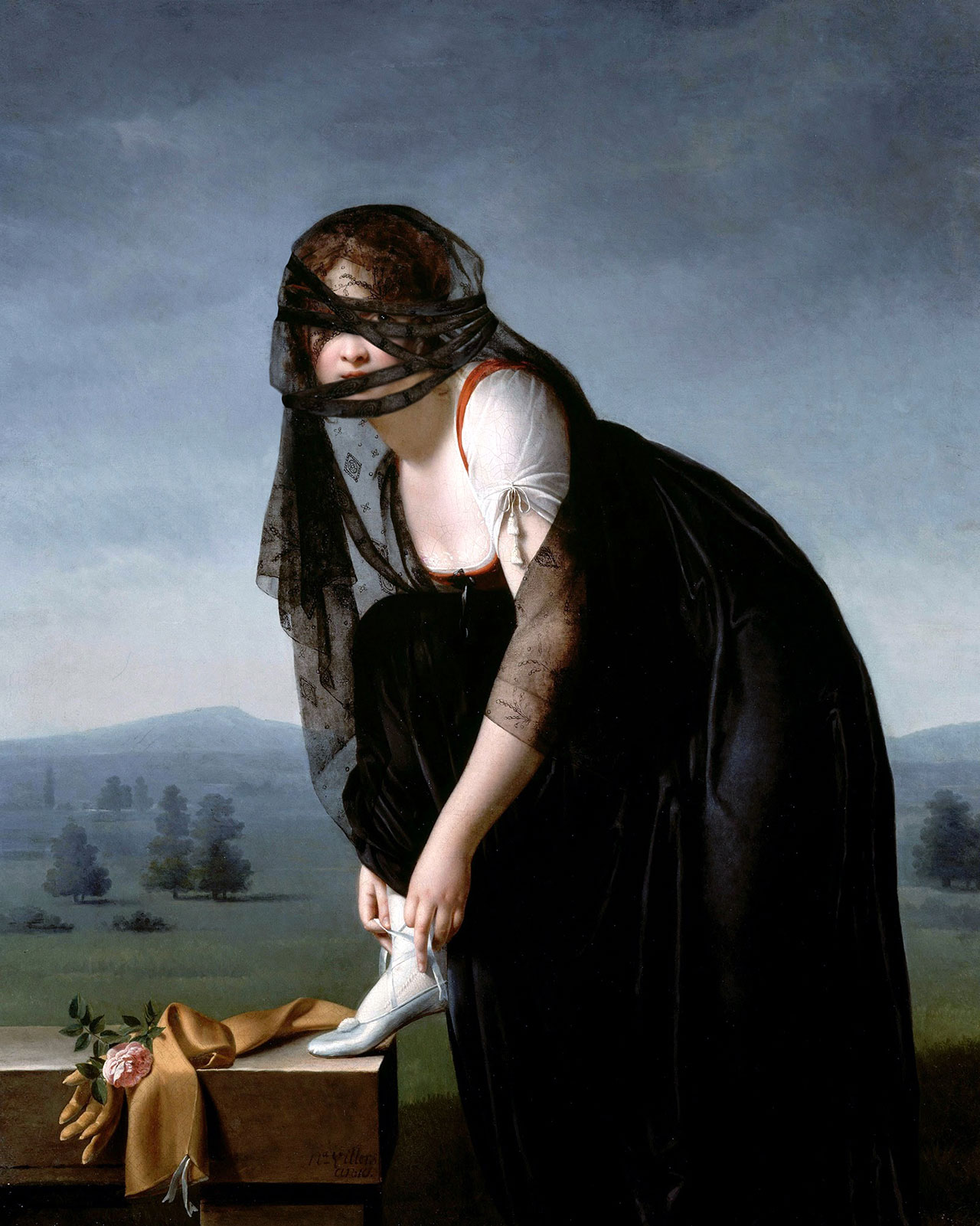
Volker Hermes, Hidden Villers II, 2020.


